COMMUNITY
How a Phoenix business owner is promoting healing through art


How a Phoenix business owner is promoting healing through art

 NADINE BUBECK
NADINE BUBECK
The most often repeated comment Ora Kurland hears is, “I thought I was the only Jewish person in Cave Creek.” However, soon that comment might not be as commonplace. In fact, there’s a booming of Jewish life happening in Cave Creek and Carefree.
According to Kurland, Jewish life in Cave Creek and Carefree was an oxymoron a few years ago. Now, there’s an impressive growth of Jewish community happening in the area.
“It’s important to form a strong sense of comfort and unity in our area, which has a large population of non-Jewish residents,” said Kurland.
Kurland is the founder and leader of the Jewish Social Group of Cave Creek and Carefree. For now, they don’t even have a website; however, their mailing list has 250 names on it.
“Group members love knowing who their Jewish neighbors are. It’s important socially and the quality of holiday and Shabbat celebrations is improved when you can share them with friends,” said Kurland. “In addition, there are many unaffiliated Jews in the area. For some, our group is their only Jewish connection.”
Their mission is simple: developing and growing the Jewish community in their geographic area. They hold an array of holiday-based events — like hamantaschen baking and a Rosh Hashanah luncheon — but try to focus on the social side of things. For example, they have a book club and organize outings, such as touring the Arizona Jewish Historical Society and Queen Creek Olive Mill during Chanukah.
“Our planning meetings are held every six months and open to all members of the group,” said Kurland. “Also, all our events have a tzedakah component; a worthy
The ultimate ‘hybrid’ bar and bat mitzvah planning checklist
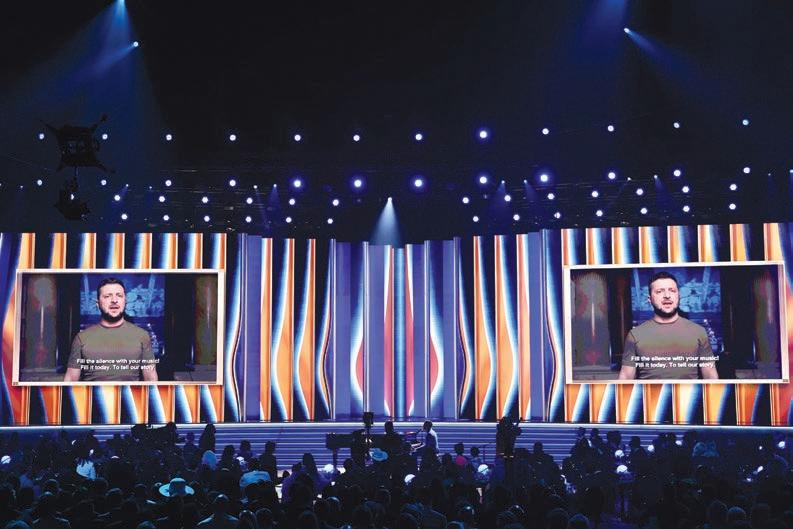
When Jake Reisman, 26, spelled the words “camp makes my heart sing,” his mother, Sara, knew her nonspeaking, autistic son would love a retreat center and residential community that she and other Jews were opening at a former Jewish overnight camp site in Prescott.


Ten years in the planning, Teva Community was founded by a group of friends in their 50s and 60s who have nostalgic memories of their beloved Camp Teva, renamed Camp Lebeau in 1978. The summer camp run by the Phoenix Jewish Community Center closed in the late 1980s and was reopened as the YMCA’s Camp Anytown.
Abandoned for 10 years, the 35-acre wooded site with a lodge and bunkhouses is on its way to becoming a supported liv ing community for adults with autism who communicate their thoughts and desires alternatively through letterboards, key boards, computer tablets and other devices.
And that’s not everyone Teva Community will serve. The educational and multipurpose retreat center will be offered
Flagstaff-based publishing house Salina Bookshelf, Inc. prints an annual calendar that includes Passover — in Navajo. See page 12.

cause is chosen and group members are invited to donate.”
However, that’s not the only Jewish affiliation in the area. Cave Creek is also home to Congregation Kehillah, led by Rabbi Bonnie Sharfman, who is dedicated to evolving Jewish growth in the area.
“Congregation Kehillah is a small, dynamic, friendly synagogue offering services and programming for all ages,” said Sharfman. “Our purpose is to provide a community for Jews and their families to foster their Jewish identity, live Jewishly, pursue social justice and engage in learning.”
Sharfman has led the synagogue since 2008, when seven individuals were hungry for new, different ways to explore Judaism. The independent synagogue has a membership that consists of congregants from all over metro Phoenix.
With family being a priority, they created YEP!, their Youth Education Program for kids. YEP! is tuitionfree for Kehillah member families and starts in kindergarten and continues through high school. The older students participate in their Tzedek Teen Initiative, a philanthropic leadership program to learn about being better leaders and activists in the Jewish and Greater Phoenix communities.
Another organization that caters to Jews living in Cave Creek and Carefree is the Desert Foothills Jewish Community Association (DFJCA). DFJCA was founded in 1998 by a group of residents living in the Terravita Golf and Country Club community. At the time, Terravita was a new development and its Jewish residents were seeking a spiritual community. The original idea was to offer High Holy Day Services at Terravita, but since the response was
overwhelming, DFJCA was created, becoming a corporation and receiving nonprofit 501(c)(3) status.


They aim to provide spiritual and social activities to its 200-plus members. DFJCA donates funds to local, national and international organizations such as the Greater Phoenix Jewish Film Festival, Arizona Jewish Historical Society and more.

“These three established groups — the Jewish Social Group, Congregation Kehillah and Desert Foothills Jewish Community Association — all contribute in unique ways to building a sense of Jewish life and community in our geographic area,” said Kurland.

For the past five years, The Town of Carefree has also hosted an annual Chanukah in Carefree at the Sanderson Lincoln Pavilion downtown. Every
night of Chanukah, a different Jewish organization in the Greater Phoenix area leads the menorah lighting and a program that is also presented via live stream. The goal is to bring light to the Jewish community and provide an opportunity for people to gather together during the holiday.
“This community has taught me the true meaning behind ‘labor of love.’’ said Kurland. “I love the friendships that I witness develop and it has enhanced my Jewish life in a very meaningful way.” JN
For more information on the Desert Foothills Jewish Community Association, visit dfjca.org; for Congregation Kehillah, visit congregationkehillah.org. Ora Kurland can be contacted via email at ora@morah-ora.com.
Nadine Bubeck is an author and freelance writer living in Scottsdale.
January 7
January 18
February 4
February 18
March 4
March 18
March 25
April 1
April 8
May 6
May 20
June 10
July 8
July 29
August 5
August 19*
September 9
September 16
September 23
October 7
October 14**
October 21
October 28
November 4
November 18
December 2
December 16
PUBLISHER Jewish Community Foundation of Greater Phoenix

GENERAL MANAGER
Rich Solomon | 602.639.5861 rsolomon@jewishaz.com
MANAGING EDITOR Mala Blomquist | 602.639.5855 mblomquist@jewishaz.com
ADVERTISING SALES CONSULTANT

Jodi Lipson | 602.639.5866 jlipson@jewishaz.com
SUBSCRIPTIONS 602.870.9470 x 1 subscriptions@jewishaz.com
GRAPHIC DESIGNER Frank Wagner | 410.902.2300 ads_phoenixjn@midatlanticmedia.com
ADVERTISING:
Jaime Roberts, Publisher | 2013-2016
Florence Newmark Eckstein, Publisher | 1981-2013
Cecil Newmark, Publisher | 1961-1981
Pearl Newmark, Editor | 1961-1981
M.B. Goldman, Jr., Founder | 1948-1961
PROUD MEMBER OF
to like-minded nonprofits, teachers and families that support people with autism.

Sara Reisman, president of the board, said that Teva (Hebrew for nature) Community will fill a need for a living and learning environment for people who have grown up and “aged out” of government-funded services.
According to Autism Speaks, it is estimated that 40% percent of children diagnosed with autism spectrum disorder are considered nonverbal, meaning that they may never learn to speak more than a few words. The use of spelling methods (letterboards, keyboards, computer tablets, etc.) has given autistic people an alternative form of communication.
“When we started using some of these spelling methods, we learned that he’d been listening all this time,” said Amy Greiner, mother of Joshua, a 20-year-old with autism and executive director of Teva Community. “He really understood everything and his schools were not supportive. So, I started homeschooling him four years ago. He understands multiplication and division and now writes poetry.”
Federal law guarantees an education for children with developmental disabilities, like autism, until the age of 21. At that point, they lose the specialized help and structure they’ve had for most of their lives.
That gives parents like Reisman cause for deep concern. “From a very young age, when we realized that autism is here forever and it’s not something that’s going to be cured or needs to be cured, we’d been thinking, what are we going to do?”
One answer is Teva Community, where nonspeaking adults who need a lot of support can live with some independence.
“As they get older, they don’t want to live at home,” said Nate Stein, vice president of the board and Jake Reisman’s uncle. “They want to live as independently as they can, to make their own friends and have their own relationships.”
The retreat center, near Iron Springs and Granite Basin Roads, will open the summer of 2023. The facilities still need construction and refurbishing. Structures include 12 bunkhouses (120 beds), two bathhouses and a large lodge with a commercial kitchen. “It needs significant repair,” said Stein, who spent his career running Jewish community centers in Phoenix, Tucson, Tempe and other places and was also a director of Camp Lebeau.

Given the makeup of the board and the site’s history, the founders are drawing a good share of donations — $163,000 in just a few months — from the Arizona Jewish community. Other donors who have contributed to the recent Facebook fundraising campaign are from the autism community. The founders themselves have donated thousands of dollars toward the $35,000 needed to purchase the
Scottsdale resident Gerda Weissmann Klein, author, humanitarian, inspirational speaker and Holocaust survivor, died April 3. She was 97.

During World War II, Weissmann Klein and her family were deported from the Bielsko ghetto in Poland. Her parents were sent to Auschwitz, but Weissmann Klein was transported to the Gross-Rosen camp system to perform forced labor. Liberation came after a brutal 350-mile death march to avoid the advance of the Allied forces. Of the 4,000 women who started the march, fewer than 120 survived.
Weissmann Klein wrote 10 books, and her autobiography, “All But My Life,” is frequently used as a text by Holocaust educators. Her life also was the subject of an Oscar- and Emmy-winning short film, “One Survivor Remembers,” and her story is featured in the film “Testimony,” which is part of the permanent exhibit at the U.S. Holocaust Memorial Museum in Washington, D.C.
As she recounts in her autobiography, she married her liberator, U.S. intelligence officer Kurt Klein, in Paris in 1946, and the couple then moved to the United States. They spent most of their lives together in Buffalo, N.Y., where they had three children. The Kleins dedicated their time to community service, promoting tolerance, advocating for Holocaust education and human rights. They moved to Scottsdale for their retirement.
Kurt Klein died in 2002. In 2011, “The Hours After: Letters of Love and Longing in War’s Aftermath,” was published, featuring the letters and correspondence between Gerda and Kurt from the time they became engaged weeks after she was liberated until their wedding a year later.
In 2008, Weissmann Klein, a naturalized citizen, founded with her granddaughter, Alysa Ullman Cooper, Citizenship Counts, a nonprofit that teaches students across the country about civic rights
YMCA camp, which sits on U.S. Forest Service land.
“We were concerned about how potential donors would feel that it’s not being turned into another Jewish camp,” Reisman said. “But we have had so much support from the Jewish community. Everyone is so excited because autism pretty much touches almost everybody. If you don’t have a child, you have a friend or relative with a child. Plus, we’ll have reunion retreats there and people can come back to camp.”
Such programs for adults with autism can be $6,000 a month if paid privately. But Teva Community organizers are hoping for government assistance in the form of revenue from training programs, social security and Medicaid vouchers. “Our goal is not to make it a burden on families; but to have their government benefits cover their residential needs,” Stein said.
The Teva Community website makes a strong case for the residential program: “Most importantly, based on input from nonspeaking autistics themselves, we believe we can create an environment that they need, want and deserve, one that’s positive, empowering, centered on human rights and dignity, with pathways to meaningful careers, increased confidence, autonomy, growth, self-expression and joy.” JN
For more information, visit tevacommunity.org.

humanitarian work, on Feb. 15, 2011, President Barack Obama presented Weissmann Klein with the Presidential Medal of Freedom, the highest civilian award in the United States.
“The death of Gerda Weissman Klein underscores the importance of Holocaust education. Today’s generation of students are the last to have the opportunity to meet and hear from a Holocaust survivor, a victim of the genocide that claimed more than six million Jewish lives,” said Sheryl Bronkesh, president of the Phoenix Holocaust Association. “Schools should not delay in bringing in survivors — in person or virtually — to talk to students so that they can learn directly about the consequences of hatred and bigotry.” JN
This is a developing story.


 MICHELLE TALSMA EVERSON
MICHELLE TALSMA EVERSON

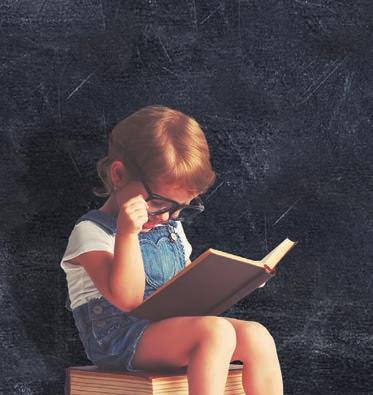



April is National Sexual Assault Prevention and Awareness Month, a devastating topic that impacts all of us. According to the National Sexual Violence Resource Center, one in five women in the United States have experienced completed or attempted rape during their lifetime; and nationwide, 81% of women reported experiencing some form of sexual harassment or assault in their lifetime. To help local victims of sexual assault in their recovery, Phoenix business owner and sexual assault survivor Heidi Koffman is launching a new creative healing support group for adult women survivors of sexual assault.
“Six years ago, after I was sexually


assaulted, the one thing I needed was a creative outlet for healing and a support group dedicated to women survivors of sexual assault,” Koffman, who owns Craft Nights, an arts and crafts studio located in north Phoenix, said. “I couldn’t find one easily. I’m hoping to change that with the creation of ‘Art in the Afternoon,’ a support group for adult women healing from sexual assault. We meet monthly, so we don’t feel alone and have an opportunity to heal from trauma through art and creativity.”
The first meeting of Art in the Afternoon will take place on Sunday, April 24, from 3-5:30 p.m., and all third Sundays of the month after the initial
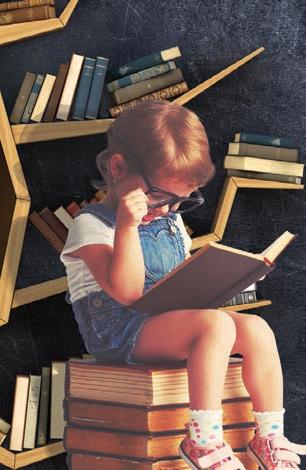
at La Siena Senior Living Community— clubs, events, fitness options, and more. So, go ahead and make your want-to-do list. But don’t include a bunch of chores. We’ll take care of most of those for you along with delicious dining choices, safeguards and supportive care needs.
We invite you to experience La Siena at our upcoming event.

date. (The May date is May 22, and so forth.) The new monthly event takes place at Grounded32, a community center dedicated to mindfulness and creative healing, located at 13651 N. 32nd St. in Phoenix. The event is free to participate

With the date of the first meeting coming soon, Koffman has high expectations for the future of the event.
“My hope for this group is that other women who have gone through sexual violence come together and realize







Broadway credits include EVITA (Eva Peron), FIDDLER ON THE ROOF (Yente), SUNDAY IN THE PARK WITH GEORGE (Frieda), WICKED (Madame Morrible), and her Tony Nominated turn in URINETOWN: THE MUSICAL (Penelope Pennywise).
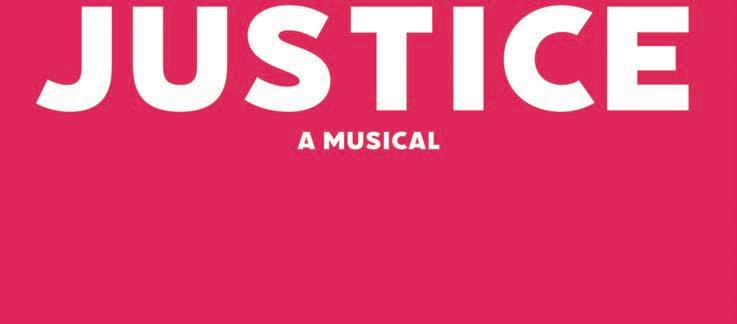
in, but donations are welcome.
“I grew up with a Jewish father and immersed in all of the holidays I still cherish today,” Koffman shared. “From that experience, I learned the importance of community, culture, love and forgiveness.”
Koffman is partnering with two local nonprofits to help propel the monthly event: Grounded32, which provides the meeting space and the Arizona Coalition to End Sexual and Domestic Violence, which will be providing pamphlets and resources for additional help survivors may need. Craft Nights and Grounded32 will be providing the art supplies for each monthly project.
“Art and creativity are a huge part of my healing and I wanted to have a space and group where creativity and healing could exist for survivors by survivors,” she said.
they aren’t alone in their thoughts, struggles and journey to heal,” Koffman added. “And that by creating this group, friendships are formed and we create a community of healing.” JN
To RSVP for this group or for more information about this event, visit grounded32.org or e-mail info@grounded32.org.
If you have experienced sexual assault or domestic violence, help is available. Speak with someone immediately by calling the National Domestic Violence Hotline at 800-799-SAFE (7233) or 800-787-3224 (TTY) or by calling the National Sexual Assault Hotline at 1-800-656-HOPE (4673).

Locally, victims can contact the Arizona Sexual and Domestic Violence Helpline at 602-2792980 or via SMS text message at 520-720-3383


Monday-Friday, 8:30 a.m.-5 p.m. with extended hours Tuesdays from 8:30 a.m.-7 p.m. Of course, if in doubt, call 9-1-1. Visit acesdv.org/get-help-now for information and local resources. Michelle
“SIX YEARS AGO, AFTER I WAS SEXUALLY ASSAULTED, THE ONE THING I NEEDED WAS A CREATIVE OUTLET FOR HEALING AND A SUPPORT GROUP DEDICATED TO WOMEN SURVIVORS OF SEXUAL ASSAULT.”

hat follows is my experience with an insidious scourge that — while rare nationwide — finds its epicenter right here in Arizona. Endemic to the American Southwest, Valley fever is also known as coccidioidomycosis (cocci, for short). In 2019, 18,407 cases of Valley fever were reported to the Center for Disease Control and Prevention. It’s transmitted by microscopic fungal spores made airborne by disturbing the desert soil. If you inhale cocci-laden dust, you may or may not get sick. Symptoms can range from mild to severe and are notorious for mimicking other diseases, often making diagnosis a challenge. This invisible beast hit me like a Mack Truck more than 15 months ago and I spiraled into a medical rabbit hole from which I’ve yet to emerge fully.
One Sunday morning in December 2020, I headed to the emergency room with a fever, chills and bloody sputum. Valley fever was the furthest thing from my mind. We were in the thick of the
WCOVID pandemic, a vaccine was not yet available and I assumed my number was up for the dreaded coronavirus.
Driving to the ER, I was overcome by existential fears. If I had COVID, would I ever see the outside of a hospital again? Would I be saying final goodbyes to my husband at the front doors? I was 58 years old and reasonably healthy, but
he continued, while uploading my chest X-ray to a computer screen. “See this 5 cm x 5 cm mass in your left lung? That’s about the size of a baseball.” I went light headed as the words “mass” and “baseball” pounded in my ears. My elevated pulse and blood pressure set off monitor alarms. Acknowledging this, and the terror in my eyes, the
ANXIETY CRUSHED MY USUAL STRONG, GROUNDED PERSONA. INSOMNIA TOOK SIEGE AND I DROPPED WEIGHT PRECIPITOUSLY, WHICH ONLY FUELED THE FEAR OF CANCER. I SOUGHT PSYCHIATRIC CARE FOR THE FIRST TIME IN MY LIFE.
coughing up blood was not a positive sign and this COVID thing was shooting random arrows at unlikely victims.
The ER workup was shocking. I was hooked up to monitors, given a COVID test and chest X-ray and had blood drawn.
A doctor arrived to share the results. “Your COVID test is negative; that’s the good news, but there is a problem,”
doctor continued, “It’s hard to tell, but a consolidation like this usually represents an infection — like pneumonia or it could be a neoplasm.” That’s when the pounding in my ears, and everything else, went silent. The doctor continued speaking but I heard nothing after the word neoplasm. I knew what that term meant. (A neoplasm is a tumor that may
be benign or malignant.)
The doctor interrupted the gathering storm of my questions and announced, “I’ve ordered a CT scan.” Afterward, he stood at maximum distance from me and my predicament. “Well, the scan gave us a clearer picture of the mass,” he began. “And you’ve never been a smoker?”
“Correct,” I replied hopefully. He took a breath and explained what would come next: antibiotics for a presumed bacterial pneumonia and follow up with a pulmonologist and oncologist. Oncologist? He told me he placed a call (on a Sunday?) to an oncologist who’d see me in two days. Two days? Why so urgent?
“But if this is cancer, why the pneumonia symptoms?” I managed to pipe up before the doctor left. He anticipated my question. “A tumor could be obstructing the [blah, blah, blah]… causing an infection.” I shouldn’t have asked.
A nurse arrived to disconnect the monitors and IV. I searched her eyes for acknowledgment of my newfound predicament but she focused on completing her tasks and finally said,
Mid-Atlantic Media, a fast-growing publisher of niche community and ethnic titles, is seeking a sta writer for its full time publishing project Phoenix Jewish News in Scottsdale, AZ. Phoenix Jewish News is an award-winning, print and digital publication covering the greater Phoenix diverse Jewish community since 1948. Our ideal candidate has experience with and enjoys writing both news and feature stories, thrives in a deadline environment and has digital media experience.
You love telling the stories and tracking down the facts that are at the heart of any article. You can thrive on multiple assignments and are flexible about evening and weekend work. Words and ideas are your oxygen. Photography experience is a plus. So is familiarity with Jewish community and Israel.
Whether it’s a missile attack, a new Covid variant, or serious car crash, your gift to Magen David Adom ensures its 30,000 emergency medical technicians and paramedics have the supplies and resources they need to save lives. So this Passover, while you recount the story of the Jews’ redemption from slavery, your gift will help modern-day Israelis survive the threats they face today. Make a gift to Magen David Adom today. Pesach kasher v’sameach.

As an employee of Mid-Atlantic Media, you’ll be a part of a rapidly expanding organization that, in addition to the Phoenix Jewish News, publishes Washington Jewish Week, Baltimore Jewish Times, and other publishing projects such as Jewish Exponent in Philadelphia and Pittsburgh Jewish Chronicle. Such a range of outlets a ords writers the opportunity to have multiple bylines across the U.S.
If you are a confident and capable reporter looking for a new opportunity with a fast-growing media company, this is your chance.
To apply, email a cover letter, resume and recent clips mblomquist@midatlanticmedia.com No phone calls, please.
It’s not manna from heaven, but this Passover, provide something just as crucial to the survival of the Israeli people.
“Have a good rest of the weekend.” Seriously, she said that.
Emerging from the building, I surveyed the gorgeous afternoon and it occurred to me that, just hours earlier, it seemed possible I’d never be outdoors again. I was grateful that I’d dodged the potentially deadly COVID bullet. Still, I had no idea what lay ahead. I only knew I was very sick and the specter of cancer was on the table.
The ensuing seven weeks were a blur: ongoing sickness; consulting with doctor friends; scrambling to find a pulmonologist who — amid a respiratory pandemic — would even see me; many physician visits, blood tests, x-rays and scans; and anxiety that spiraled out of control when a diagnosis remained elusive and no doctor would definitively rule out cancer.
Anxiety crushed my usual strong, grounded persona. Insomnia took siege and I dropped weight precipitously, which only fueled the fear of cancer. I sought psychiatric care for the first time in my life.

I soon began experiencing migrating joint pain and a doctor friend told me it sounded like desert rheumatism, another name for Valley fever. Valley fever was mentioned as a potential diagnosis from the beginning but initial and follow-up blood tests were negative. An infectious disease doctor explained that blood tests are notoriously negative in the early stages.

I sought a second opinion from a pulmonologist who confidently declared, “This looks very much like Valley fever. Nothing suggests cancer.” I was finally ready to believe cancer was out of the equation. He ordered more blood labs and the results, after seven weeks and four rounds of testing, were positive.
I wish I could report all the pieces fell into place after this official diagnosis, that I was treated, symptoms disappeared and I happily moved on with my life. But treating Valley fever, I learned, is tricky. A doctor must assess disease severity and likely immune response before deciding whether to prescribe antifungal
medications. The drugs don’t outright kill cocci; they merely inhibit its ability to grow and reproduce.
Because a one-inch cavitary lesion (fungus surrounding an air space) remained in my lung, three doctors recommended I take the antifungal fluconazole but they disagreed for how long. After six months and two follow-up CT scans, a pulmonologist instructed me to stop fluconazole and “hope for the best.” He explained that the lung lesion would hopefully remain dormant, diminish and disappear over time.
Then while vacationing in Oregon that summer, I became sick, was diagnosed with pneumonia and told to consult with my Arizona doctors about possible reactivation of Valley fever.
Two pulmonologists said the illness now appeared chronic and I should restart fluconazole. This was depressing and troubling news. I sought counsel from a professor and infectious disease doctor in Tucson, widely considered an expert in Valley fever.
I heard from him a different take on my disease status and prognosis. At this point, I’d seen five doctors in eleven months. Doctors disagree whether I have acute or chronic Valley fever, whether the lesion is worrisome and whether I should still be treated with medication.
For sanity’s sake, I’ve opted to continue care with just one local doctor. Under his guidance, I stopped my second course of fluconazole three months ago. Recently I developed a nagging, wet cough. Tests just showed I’m still positive for specific cocci antibodies. And though the lung lesion has slightly diminished, there are signs of increased inflammation surrounding it. Might this explain the new “productive” cough? Might another pneumonia be brewing? Will I benefit from another course of antifungal therapy?
I see the doctor next week and my story continues. JN
 RUDY MALCOM
RUDY MALCOM
Scott Leader, the Jewish musician, producer and songwriter who owns Brick Road Studio in Scottsdale, says he’s probably worked with every well-known contemporary Jewish singer-songwriter. He’s also recorded vocals for pop star Dua Lipa and voiceover work for former Olympian Michael Phelps. “You never know who’s gonna walk in the door,” Leader said.
After 12 years, Leader is opening a new door. The building that houses Brick Road Studio was sold, forcing him to relocate. By the beginning of April, things should be up and running in the new, more spacious studio — located just around the corner at 7430 E. Butherus Dr.
“We were able to build this place from the ground up,” Leader said.
Leader first experienced a recording studio in the 1990s with his high school grunge band. Earlier, he taught himself to play piano by listening to Billy Joel records as a child.
And he learned how to play guitar after a NFTY youth program advisor asked him to be song leader. “Being in front of groups of people at NFTY really shaped me,” he said, “and set me on the path of starting to perform music.”
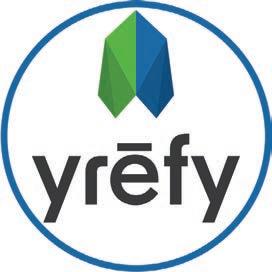
His youth group experiences also speak
to the crucial role that music has played in Leader’s post–bar mitzvah Jewish life. Leader, who is in the trio Sababa and has played across the country and around the world, said that he enjoys connecting to the Jewish community through music.
“No matter where you are and the cultural differences, Jewish music is something that all Jews sort of understand,” he said. “They’ve heard the words before, even if the melody is different.”
Leader first learned about music production while working in the renowned Sam Glaser’s studio in Los Angeles. While Leader was teaching at a Jewish day school in Austin, Texas, he was right out of college and not sure what he was doing with himself. Interning for Glaser over that summer, however, “altered the trajectory of my life,” he said, introducing him to the realm of recording.
Around the same time, another Jewish singer-songwriter — Noah Budin — came to Austin, to perform for an audience of 1,000 at the Jewish community center. A mutual friend suggested to Budin that Leader play a song on his set, and so the two did a jam session together. They hit it off.
“The night before the concert, he said, ‘Man, I would love to have you play at this concert,’” Leader recalled. “I go, ‘Great,
that’d be awesome. What song do you want me to do?’ He goes, ‘All of them.’”
And so Leader stayed up until 3 a.m. pounding away on the piano, learning all of Budin’s music. Playing for him the next day encouraged him to pursue his dream of making music professionally.
“The concert was one of the most incredible experiences of my life,” he said. “Something happens musically with two people sometimes — you just click and hit it off, you have those moments where it sounds so good. We had never rehearsed before.”
Decades later, Leader writes and performs Jewish music for his band and helps fellow artists produce in Brick Road Studio. It’s a unique skill set that he thinks has helped his studio survive when others have shut down during the pandemic.
Since COVID-19, his two bandmates have gotten busier doing other things, but Sababa have worked on songs remotely and plan to put out an album this year.
He is also the cantorial soloist at Congregation Kehillah in Cave Creek and teaches music production a couple of days a week at Arizona State University, where he earned a master’s degree in education.
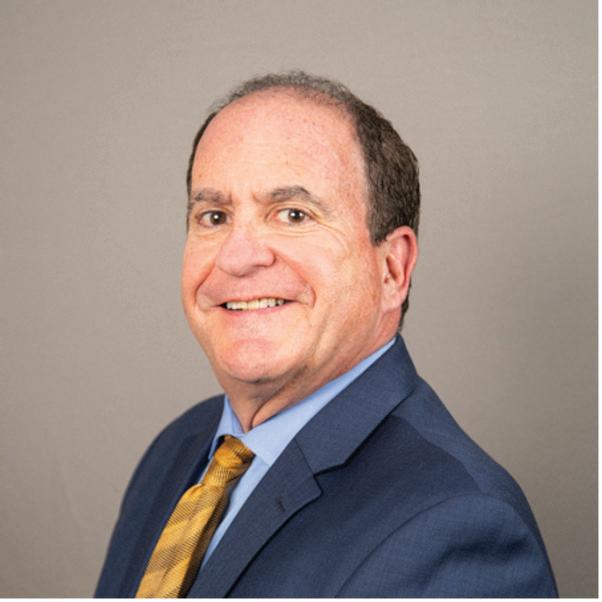
Earlier, he earned degrees in science and Judaic studies at the University of

Arizona, where he transferred from Rutgers University his junior year after visiting with a friend.
“I got off the plane in February and it was 75 degrees and sunny,” he said. “After I went home, I got in my car, drove across the country and transferred to U of A.” He lived in Austin for two years after college and in L.A. for two years after that.
“I came back here because I love the weather and like the vibe here,” he said.
And if the 200 albums of Jewish music he’s helped produce over the past two decades are any indication, Leader’s vibe is liked here, too. JN
For more information, visit brickroadstudio.com.
Rudy Malcom is a Baltimore-based freelance journalist.
The visuals from last week’s Negev Summit were impressive. They were also historic. Leaders from Israel, Bahrain, Egypt, Morocco, the United Arab Emirates and the United States met at Kibbutz Sde Boker in the Negev desert, where Israel’s founding prime minister, David Ben-Gurion, lived and is buried. Such a meeting would have been inconceivable two short years ago. And yet, following entry into the Abraham Accords and the rapid-paced progress toward normalization of relationships between Israel and her treaty partners, such steps in continued cooperative activities between Accords partners have begun to seem natural — maybe even routine.
But the Negev Summit was much more than a cooperative photo opportunity or symbolic meeting. For Israel, in particular, the summit had two key objectives. One was the meeting between Foreign Minister Yair Lapid and Secretary of State Antony Blinken that focused on the Iran nuclear talks. Reports indicate that the meeting involved some interesting exchanges, including a request from Blinken that Prime Minister Naftali Bennett explain the details of
his alternative approach. The other was the foreign ministers meeting of Lapid, Blinken, the UAE’s Sheikh Abdullah bin Zayed al-Nahyan, Bahrain’s Abdullatif bin Rashid al-Zayani, Morocco’s Nasser Bourita and Egypt’s Sameh Shoukry, in
from “ceremony to substance.” And progress was made. Among other things, participants established six working groups designed to deal with issues of security and counterterrorism, food and water, health, energy, education and
OVER THE PAST TWO YEARS WE HAVE SEEN IMPRESSIVE STEPS TOWARD THE NORMALIZATION OF SECURITY AND POLITICAL RELATIONS BETWEEN ISRAEL AND ABRAHAM ACCORDS PARTNERS AND THE ESTABLISHMENT OF A NUMBER OF VERY PROMISING ECONOMIC AND TECHNOLOGICAL ENGAGEMENTS.
which discussions included the threat from Iran, the COVID-19 pandemic and the impact of the war in Ukraine on the oil and food supply chains, among other issues.
In the words of Bennett, the Negev Summit moved the Abraham Accords
tourism. Summit participants also agreed to make the gathering a recurring event. Over the past two years we have seen impressive steps toward the normalization of security and political relations between Israel and Abraham Accords partners and the establishment of a number of very
In last week’s heart-wrenching reminder of Middle East volatility, 11 people were killed in Israel in three separate terror attacks. As a frightened civilian population grieves for the senseless loss of life, they worry about personal safety. At the same time, politicians and security personnel grapple with the proper response to the orchestrated bursts of violence that appear to be motivated by movements of conciliation between Israel and its Arab neighbors.
The issue is made even more complicated by the fact that the Muslim month of Ramadan began over the weekend, and Easter and Passover are approaching. Israel’s government knows that in this month of symbolism it needs to maintain order both to present a stable face to the world in a time of global volatility and in order to maintain sufficient public support to stay in power. All the while, the opposition led by former Prime Minister Benjamin Netanyahu and his Likud party is watching closely, as they use last week’s killings to support the narrative that Israel’s terror concern is uniquely an Arab threat and one which
can only be controlled by more securityminded leadership.
Israel’s delicately balanced coalition government led by Prime Minister Naftali Bennett and Foreign Minister Yair Lapid — which includes the Ra’am Islamist
Abbas forcefully condemned the attacks, calling them “a heinous and indecent terrorist crime … against innocent civilians,” and pledged that ”we all stand together in the face of a murderous wave of terror, all of us with no differences.”
UNDER THE CURRENT COALITION REGIME, THE COOPERATIVE AND COLLABORATIVE EFFORTS BETWEEN JEWS AND ARABS
IN ISRAEL ARE PERCEIVED AS A THREAT TO THOSE ARABS AND ISRAELIS FOR WHOM IDEOLOGICAL PURITY IS MORE IMPORTANT THAN AMITY.
party — has managed to survive by cooperating where possible, and avoiding controversial decisions. An example of the cooperation came in response to last week’s killings. Ra’am’s leader Mansour
In return, the government changed the phrase “wave of murderous Arab terror” to “wave of terror,” as part of an effort to stop pointing an accusatory terror finger at every Arab in Israel and the territories.
promising economic and technological engagements. The Negev Summit sought to expand those efforts by fostering cooperation on a number of issues that go beyond Iran and trade. That further engagement by the regional partners is another positive sign for the stability of Accords relationships going forward.
The fate of the Palestinians was only barely addressed during the summit. Although several speakers made statements about the Israeli-Palestinian peace process and Palestinian statehood, very little of substance was addressed and the spoken words appeared to be nothing more than lip service. Perhaps new opportunities to address the issue will come up in the context of other cooperative consultations.
Nonetheless, we applaud the Negev Summit. It was refreshing to see Israel and Arab countries addressing issues other than security, and we are optimistic about the multi-tiered possibilities for the planned regional efforts and partnerships. Finally, we hope that the success of the summit will help attract others to join in the growth opportunities offered by the Abraham Accords. JN
Nonetheless, safety and security remain top concerns for Israeli voters. And if the attacks continue, a rattled public could embrace what is touted as Netanyahu and Likud’s more security-conscious approach — of which would also bring greater intolerance, and a more accepting attitude toward the aggression of the settler population’s militant side.
It is for this reason, among others, that the Bennett government’s decisions and actions in response to the terror attacks are so important. Under the current coalition regime, the cooperative and collaborative efforts between Jews and Arabs in Israel are perceived as a threat to those Arabs and Israelis for whom ideological purity is more important than amity. And terror feeds that narrative.
There is speculation that the recent violence was orchestrated in response to last week’s appearance of the foreign ministers of Egypt, UAE, Bahrain and Morocco at an Abraham Accords summit in Israel. Fortunately, the violence didn’t stop the summit. We hope it will not be allowed to jeopardize other cooperative progress that has been made. JN
We are a diverse community. The views expressed in the signed opinion columns and letters to the editor published in the Jewish News are those of the authors. They do not necessarily reflect the views of the officers and boards of the Jewish Community Foundation, Mid-Atlantic Media or the staff of the Jewish News. Letters must respond to content published by the Jewish News and should be a maximum of 200 words. They may be edited for space and clarity. Unsigned letters will not be published. Letters and op-ed submissions should be sent to editor@jewishaz.com.
As Jews we are often told that the world must not be allowed to forget the Holocaust. We often say “Never Forget” as a way of emphasizing its importance for Jews and for the whole world. I certainly agree with that, but keeping the memory of the Holocaust alive isn’t enough. The problem is not just that the memory of the Holocaust might fade with time; the real issue is that the Holocaust itself might be hijacked for political purposes and that its meaning and significance could be lost forever.
Consider the deplorable use of the Holocaust by prominent political voices during the pandemic, who often framed their frustration with mask and vaccination requirements as a struggle against Nazism. Marjorie Taylor Greene, a Republican representative from Georgia, said that people “don’t need your medical brownshirts showing up at their door ordering vaccinations. You can’t force people to be part of the human experiment.”
She is clearly trying to steal the Holocaust to elevate her personal concerns about vaccines and masks, and this leads her to claim that U.S. officials
are as oppressive as the Nazi brownshirts, and reasonable health measures are just as violent as the medical experiments of Nazi doctors like Josef Mengele.
This is, of course, insulting to all the Jews who suffered during the Holocaust. The insensitivity of it is staggering. But what I am focusing on here is the way it confuses ignorant people about the meaning of the Holocaust. Our health care workers are not Josef Mengele. The Holocaust should not be used to score cheap political points. This is insulting, but it is also dangerous.
The Dallas Human Rights and Holocaust Museum reports that one elected official in Idaho, complaining that the governor was requiring nonessential workers to stay at home, claimed that during the Holocaust, “nonessential workers got put on a train.” But Jews were not “put on a train” because they were nonessential workers. This would be laughable if it were not so serious.
They were put on a train because they were Jews, and they were being sent to forced labor and extermination camps because they were Jews. They were not just being asked to stay at home briefly
to keep a virus from spreading. This is a truly contemptible use of the Holocaust, and it also represents a crude attempt to capitalize on the respected place that the Holocaust has in history for selfish purposes. Not only was this an insult to all the Jews who were slaughtered by the Nazis, it misses the point.
The right-wing commentator Glenn Beck has compared the decision of Facebook and Twitter to ban hate speech on their platforms with Nazis putting Jews in the Warsaw ghetto. Beck said, “This is like the Germans with the Jews behind the wall. They would put them in the ghetto. Well, this is the digital ghetto. You can talk all you want, Jews. You do whatever you want behind the wall. Well, that’s not meaningful and that’s where we are.”
This makes me so angry, I can barely contain myself. Beck implies that the Jews in the Warsaw ghetto had complete freedom within the ghetto. Everything was fine there. The only problem is that their speech was not allowed beyond the walls. But the Warsaw ghetto was hellish. And in the end, those who did not die of starvation or illness in the ghetto were
killed or sent to concentration camps. This rant of Beck’s is a travesty and a false analogy. The Jews of the Warsaw ghetto were being systematically prepared for extermination. They weren’t just losing their privileges on some social media sites because they were spreading hatred and lies. They were the victim of hatred and lies.
We have every right to be offended by this political use of the Holocaust. But, more than anything, we should be concerned that over time the Holocaust could become a meaningless metaphor for anything unpleasant. We must not allow the Holocaust to be transformed into a metaphor to be thrown around whenever it suits someone’s political purposes. We should continue to say “Never Again,” but we have a new challenge: We need to work tirelessly to clarify what it is that we must not forget. The Holocaust is not a metaphor. It is history, and we have to fight to keep its historical significance. JN
Solomon D. Stevens has a Ph.D. from Boston College. His publications include “Religion, Politics, and the Law” (co-authored with Peter Schotten) and “Challenges to Peace in the Middle East.” This piece originally appeared in Baltimore Jewish Times — a Jewish News-affiliated publication.
As a Jew growing up in Poland, I participated in the Polish democratic opposition of the 1970s, then the prodemocracy Solidarity movement and finally the anti-Communist underground of the 1980s. I was very painfully aware that some of my fellow militants were antisemitic, and that at times this antisemitism, not a love of freedom, could be the main motivation of their actions.
Yet I had no doubt that if we won and secured freedom for all, antisemites included, it would have been well worth it. Thirty years of an independent and free Poland have given me no reasons to question that commitment, even though antisemitism remains a visible presence, occasionally threatening and always obscene.
When Russia first invaded our eastern neighbor one month ago, some around the world were puzzled about how Jews could so easily support Ukraine, given what Jews suffered there during the Shoah. Neither have Poles forgotten about the fierce Ukrainian-led massacres
of World War II, which claimed the lives of 120,000 Poles, and even if they remember the Russian occupation up to World War I and after World War II.
But here in Poland, and in neighboring countries in Central Europe, there was no question about supporting Ukraine. Figures and institutions like the chief rabbi, the Union of Jewish Religious Communities, the Polin Museum and local Jewish communities centers, as well as other Jewish institutions and organizations, immediately expressed solidarity with Ukraine.
To understand this, you need consider the value of freedom.
Freedom is something many outside observers take for granted, having, like their parents, enjoyed it all their lives. Even I, though I have spent more than the first half of my life deprived of its blessings, no longer think twice about writing and publishing what I think, under my own name, and without fear of repression.
Similarly, the Ukrainians, despite the dysfunctional, heavy-handed and corrupt state that emerged after independence,
eventually won their freedom at the price of blood, during the Maidan Revolution of 2013–14. This is the freedom Russia would now take away from them.
The yearning for freedom is why I publicly endorsed the Ukrainian Orange Revolution of 2004. Some other Jewish observers, no less knowledgeable about East Central Europe, criticized me by stressing that “Ukraine is not Poland.”
In other words, they reasoned, the Polish experiment in democracy could not be expected to succeed in its eastern neighbor — and, given the heavy legacy of Ukrainian antisemitism, did not deserve to be supported there.
Their fear was legitimate, but has proven unsubstantiated: There is less antisemitism in Ukraine today than in Poland, even if the organized presence of extreme nationalists there gives grounds for serious concern.
Set aside the fact that Jews and Poles taking a common position on anything since World War II — or 1989, to be more generous — is in itself a stunning development. Those who do not understand our support for
Ukraine overlook another fundamental thing: This is not about the past. It is about the future. As Marta Kubica, executive director of the Poland office of the European Leadership Network, an NGO dedicated to strengthening European-Israeli relations, has said: “Political quarrels have been set aside, and we’re finally looking in the same direction: the future. It’s regrettable that it took a war for this to happen, but hopefully we can remember this feeling and use it to strengthen our future relationship.”
To be sure, Ukrainians have not yet fully owned up to the unspeakable suffering they inflicted on Jews and Poles alike, if not equally, during World War II. But Poles, too, have yet to fully acknowledge their own role in the violence against Ukrainians and Jews before, during and after the Second World War. Ukrainians, Poles and Jews who lived under the former Soviet Union will, like the Russians, have to make a reckoning of their roles as both victims SEE
ow do you celebrate your birthday? If you’re like the average American, you probably celebrate with cake, a party and presents.
How do you celebrate your Jewish birthday? DO you celebrate it?
SHOULD you?
Throughout our history, birthdays weren’t really considered a Jewish “thing.” Sure, one became a bar/bat mitzvah on their birthday — but that was really a legal milestone and celebration of adulthood. Celebrating birthdays each year wasn’t a Jewish tradition. In fact, even today, many observant, religious, and traditional Jews don’t know their Jewish birthday, let alone celebrate it!
I googled “how do I celebrate my Jewish birthday”. The results included websites and articles from organizations all across the Jewish spectrum, each offering a host of different ways to celebrate.

What changed? And why?
The Talmud tells us that on the 13th of Nissan (April 14 this year) Haman performed a lottery to determine the month and date of his proposed annihilation of our nation. When it chose the month of Adar he rejoiced, knowing that in that month, on the 7th of Adar, our great leader Moshe passed away. The Talmud then states that he didn’t realize
GEBERT CONTINUED FROM PAGE 10 and servants of the bloody Soviet system. This is not to say that history is just a cruel mess, full of unacknowledged and unpunished crimes everybody is guilty of. We can make sense of history, and different crimes are not equal to each other. But in order for this reckoning to take place at all, we need freedom. And freedom is what the war is all about. You might have seen the brief scenes, bravely recorded on smartphones in occupied territory, of a Ukrainian woman in Sumy explaining to the Russians manning a military checkpoint that, under the Ukrainian constitution and the country’s privacy laws, she is not obligated to show them her ID. Or unarmed civilians in Melitopol blocking the way of a Russian army convoy, chanting “Go home! Go home!” — and not stopping or scattering even as a nervous infantryman starts firing into the
that on that same day, the 7th of Adar, Moshe was also born.
A yahrzeit (day of passing) is a special date. It is the culmination of all the good that a person has accomplished in their lifetime, the day that we reflect on all the good a person did during his/her lifetime. And this is why Haman was thrilled. The lots fell on the month that Moshe was taken from us. The month where he stopped teaching and leading us, where his presence and protection were (seemingly) removed from his people.
Yet, the Talmud says that Moshe’s birth outweighed his death! How could that be? At birth we don’t know how one will turn out. Will they have a positive impact on their family and surroundings? Will they be productive members of the community? They seemingly have nothing to show for themselves, no merits.
How could Moshe’s birth outweigh and overshadow his death? What about his birthday offered us Moshe’s continued protection, even generations later against Haman’s decree?
Throughout the history of the world, many have contributed groundbreaking inventions and developments that greatly impacted our lives. Overall, however, as others came along with newer inventions and ideas of their own, they’ve faded away and were forgotten.
When Moshe was born, it was clear that he was special. From the moment he was born, he radiated light. His entire essence and being was Torah and it showed from birth. His influence shone during his
lifetime and continued throughout all future generations. Today, when we study Torah, we are studying “Torah Moshe” — the Torah of Moshe. It continues to enriches lives and provide direction and meaning to humanity.
Haman didn’t understand that while others’ contributions and influence ended at their passing, the gift of Moshe didn’t end with his passing.
In 1988, after the passing of his wife (Rebbetzin Chaya Mushka Schneerson), the Lubavitcher Rebbe started a campaign for everyone to celebrate their Jewish birthday. He included instructions to focus on one’s self-growth (through prayer, study and introspection) and to dedicate time to connect with and inspire others (gather to share Torah-inspired teachings and increase in kindness to others).
In every encounter he had, the Rebbe saw the full potential of each person.
He saw that we each have a little bit of Moshe in each of us.
True, Moshe was the one who received the Torah to share with the world. Still, it wasn’t given to him exclusively. We were there at Sinai with him. At our core, we have the same essence. Our soul is one with G-d, we also have that same light. And it’s our responsibility to make sure that the light that first started shining when we were born keeps shining and influencing our surroundings and those whom we come into contact with.
So, just as we still celebrate Moshe’s birthday, we can also celebrate ours.
Each year, when we pass that day on the calendar, the spotlight is on us.
We remember and recognize that we were given specific talents. We remind ourselves how important we each are, that in our own way we can bring meaning to others. That we can make real differences in this confusing world.
It’s a day to bet thankful for the trust placed in us. And a time to strengthen our efforts- both spiritual and materialisticto bring a measure of kindness, love and peace to a world that desperately needs some!
This Tuesday is the 11th of Nissan. It marks the 120th birthday of the Rebbe. Like Moshe, his world-wide influence continues and grows, despite his passing in 1994. And like Moshe, he didn’t have an exclusivity on his teachings and ideas. His singular drive and focus was to bring the world to a utopian state — Moshiach — through the spreading of the light of G-d and his Torah. He urged everyone to do acts of goodness and kindness, to make the world a better place.
And he believed in each and every one of us — that we could do it. JN
air. Or elderly ladies singing the Ukrainian national anthem in front of the Russianoccupied city hall in Berdyansk. Only after denying Russians their freedom could Putin send his army into Ukraine to deny Ukrainians the same. Poles and Jews support Ukrainians under the old Polish revolutionary slogan, “For our freedom and yours.” The Russian army could adopt a counter-slogan: “For your oppression and ours.” Russia had become a corrupt and lawless dictatorship just as Ukraine was ceasing to be one. Their smaller Western neighbor was becoming, to Russians, an alternative to their dictatorial present. The only way to protect that present was to destroy the alternative. Hence the missiles against Kyiv.
The Polish Jewish community has prepared reception centers for Ukrainian refugees near the border, and in Lublin,
Łód´z and near Warsaw. Thousands of people have already been assisted. “How many of them are Jewish?” a journalist from a haredi publication asked in a phone interview with Poland’s Chief Rabbi, Michael Schudrich. “I don’t have the faintest idea,” answered Schudrich, “but I know they were all God’s children.” The journalist hung up, and a minute later called again – not to apologize, but to angrily comment that he “doesn’t need to be preached at.” “Oh, but he does,” Schudrich told me.
Freedom is never given once and for all. Shameful democratic backsliding, not just in Poland but in Hungary and Slovenia, demonstrates this all too clearly. And there is no guarantee that Ukraine, if it manages to repel the Russian onslaught, will become a democratic showcase, happily engaging in debate about the sins of its past. It is legitimate to be skeptical.
But there can be no doubt that if Putin wins, freedom will not have a chance. Just look at Russia today (or at Russia Today, before it abruptly shut down). Or imagine Poland after such a victory, say, 10 years from now. Between Putin’s brutal terror, and our homegrown autocrats, freedom would not stand much of a chance.
Should Jews care? If this were a Monopoly game, and if there were a “Get out of history free” card, I wouldn’t blame those who would grab it in order to show it to the next jackbooted thug who came to break down their door. But good luck to anyone who thinks the men with guns will play by the rules of the game. Or believe it’s a game at all. JN

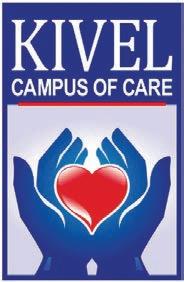


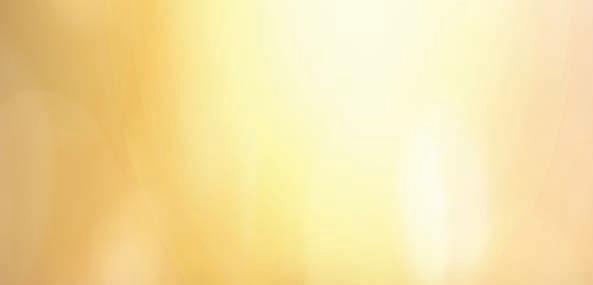 RACHEL RASKIN-ZRIHEN
RACHEL RASKIN-ZRIHEN
If you’d like to change up your Passover greeting this year, you could try it in Navajo. That would be atis adeesdzá bééhániih — Passover in Navajo — as it appears in a calendar published annually showcasing Navajo and Hopi artists by the Flagstaff-based publishing house Salina Bookshelf, Inc.

Salina Bookshelf, founded in 1994, is an independent publisher of multicultural materials which includes textbooks, children’s picture books, children’s chapter books, informational texts, reference books, audiobooks and language learning materials. They specialize in dual language books in Navajo/English and Hopi/ English and textbooks used to teach the Navajo language in schools.

Passover has been included in the calendar for several years, stated Tyler Mitchell, executive editor at Salina. However, he’s not exactly sure when it was initially added or who translated the word for the holiday into Navajo.


Navajo is the third most spoken language in Arizona, after English and Spanish. According to “Ethnologue: Languages of the World,” the Navajo language has 7,600 monolingual speakers and more than 170,000 fluent speakers worldwide. There are some slight regional variations in pronunciation and vocabulary among the language spoken in Arizona, New Mexico and Utah.
“It’s is in the 2022 calendar and we have been including it for quite a few years now,” Mitchell said about Passover. “We have Christian holidays and Navajo Nation Treaty Day, which commemorates the Treaty of 1868 on June 1 every year.”




For the Navajo (Diné), the 1868 Treaty allowed a return to their ancestral homelands (Dinétah) and is an important symbol of Navajo sovereignty, according to the Smithsonian National Museum of the American Indian.
“It’s an important holiday that commemorates when the U.S. government allowed the tribes to return to their homelands after having been displaced in ‘the Long Walk,’” Mitchell said.
As far as he knows, Passover is the only Jewish holiday in their calendar.
“When we do our calendar, we find a list of holidays on the internet, include some of them and give Navajo names to them,” he said.
For the past several years, Albuquerque, N.M. resident Dr. Gordon Bronitsky, who received his Ph.D. in anthropology from the University of Arizona in 1977, has worked promoting indigenous artisans. He has extensively studied Native American history and is an expert on Native AmericanJewish relations, having worked on cultural diplomacy with the state department.
Bronitsky discovered the unique calendar and broke down the translation of atis
adeesdzá bééhániih. “Atis is the act of moving over an object; it is the literal translation of ‘passing over an object,’” Bronitsky said. “Adeesdzá is the act of walking and bééhániih is ‘its’ remembrance.’ Thus it is a literal translation of the term Passover.”

Bronitsky thinks the Jews and the Native Americans have several things in common besides the obvious tribal social structure.
“We both are living in two worlds — the traditional and the contemporary,” he said, “Both Jews and Native Americans understand this concept. I, for instance, am not the kind of Jew my grandfather was or the kind my grandchildren will be. The Navajo understand that.”
Bronitsky asked a Navajo tribal member to come up with a Navajo word for “Jew,” and what they devised was “bicha yaji Dine’e’” or “people who wear small hats.” On the other hand, the Navajo word for “German” translates to “people who wear metal hats,” he said.






























He said he hopes to create a panel discussion with members of both tribes one day. “Native Americans who are Jewish and Jews who are Native American,” and ask, “What does it mean to belong to two tribes?”




The calendar is 9 inches by 12 inches and opens into a double-page spread that includes an illustration from “one of the many children’s books illustrated by Navajo or Hopi artists showcased each month,” said Mitchell.
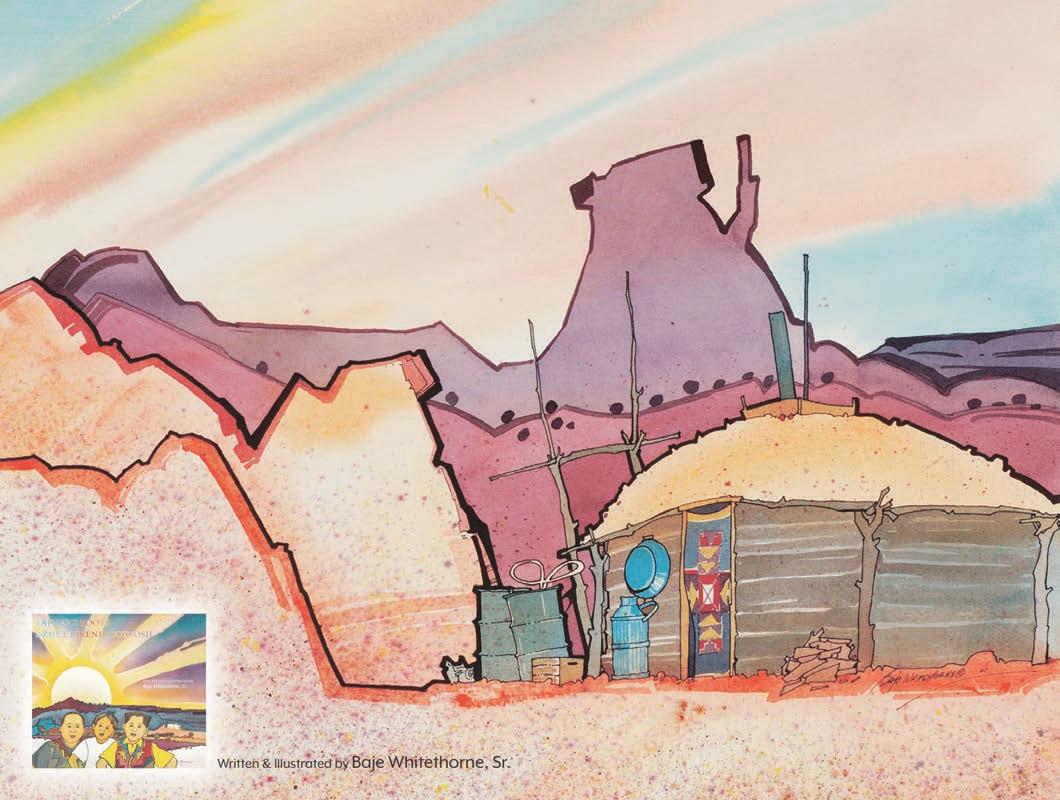

For more information, visit salinabookshelf.com.

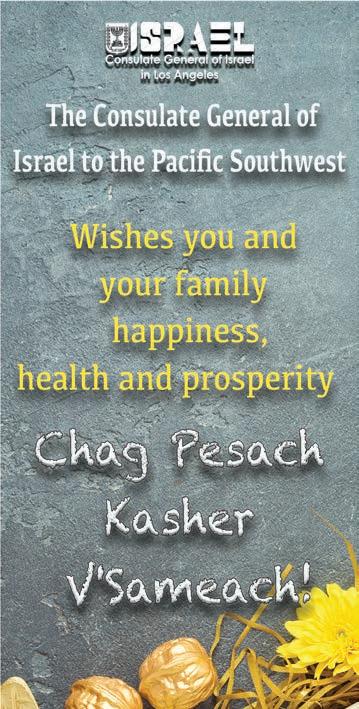
















Every Passover for the last 75 years, Helena Weinstock Weinrauch, a 97-year-old Holocaust survivor, has worn a vibrant blue hand-knit sweater to the first seder, which her neighbor hosts in her Upper West Side apartment building in New York City.

The sweater is a chic, 1940s number with fluffy angora sleeves, a sparkling metallic blue bodice and a delicate, scalloped V-neck. But this is no ordinary fashion statement. The sweater was knit by Helena’s friend, Ann Rothman, who stayed alive during the Holocaust by knitting for Nazi wives while a prisoner in the Lodz Ghetto.
Rothman was motivated to survive and, as Weinrauch tells it, “She became known in the ghetto. She was so good at knitting that she knitted coats for the wife of the German people and it became known that Ann can knit skirts, a blouse — anything you want, she can knit it.”
When I first met Weinrauch in person in December 2021, I was struck by her classic, Old Hollywood-like glamor, her storytelling and her pride in the many sweaters her friend had knit for her throughout their decades of friendship. Tiny in stature, with a soft voice, Weinrauch’s presence filled the room. I hung on her every word.
When she spoke of her brilliant blue Passover sweater — which she treats as a ritual object — she seemed to sparkle like its bright blue bodice. When neighbors or other seder-goers in her building noticed her unusual sweater, she’d say, “It’s the Passover sweater,” as if everyone has one.
After meeting Weinrauch, I was convinced that she was onto something: Everyone should have a Passover sweater — and not just because it is beautiful and festive. For Weinrauch, the sweater holds the power of remembrance, freedom and connection. And she’s far from the only one to make the connection between crafting, resilience and religious observance. In her 2020 book “Painted Pomegranates and Needlepoint Rabbis,” Jodi Eichler-Levine, Berman Professor of Jewish Civilization at Lehigh University, draws upon ethnography to study the power of craft for the Jewish People. “If we look at Judaism as an ever-evolving process, then Jewish crafts — which are all about process — can help us to see how many vital Jewish practices take place outside of synagogues,” she told me. She also reflects on the power of crafted
objects, describing them as “talismans of safety and resilience.”

Eichler-Levine’s book is about how crafters keep Judaism alive. She studied how “everyday acts of creativity are a crucial part of what makes a religious life,” and learned that “the act of making is just as important as the object itself, particularly in troubled times.”
As Eichler-Levine notes, “Crafting is an act of generative resilience that fosters the survival of both giver and recipient.”
These words resonate with me deeply on a personal level. Knitting became central to my healing after my 13-year-old son underwent brain surgery in January 2017 — I left my career behind and assumed the role of full-time mother of a child in constant pain. Over the course of his long recovery, knitting, I realized, was the key to stitching myself, and my family, back together.
After a long, three-month period of recovery, my son returned to school. Shortly afterwards, I read a story about Weinrauch in Moment Magazine. It struck a nerve. It combined my passions
for all things Jewish, knitting and the incredible juxtaposition of the two, igniting within me a drive to know more. I wondered how women knit to stay alive, what other knitted objects I might find. I launched a project, Knitting Hope, which aims to share the ways knitting or knitted objects helped women to resist, remember those they lost, and find renewal after the horrors of the Holocaust.
I knew, straight away, that Weinrauch’s Passover sweater would be an important knitting project to share with the fledgling community of knitters, survivors and supporters that I was building. Weinrauch’s life, after all, is a lesson in resilience: She survived a three-day-long interrogation by the Gestapo, three concentration camps, the Death March from Auschwitz to Bergen-Belsen, and near-death starvation.
Her parents, sister and 16 other family members did not.
But Weinrauch did not just survive the horrors of the Holocaust — she built a life filled with love and beauty. When the war ended, she was nursed back to health in
Sweden, which took thousands of Jewish refugees. “The Swedish people restored my faith in humanity,” she said, adding that she’ll “never forget their humanity.”
In Sweden, she volunteered at a hospital where she “never took a dollar,” in order to repay the Swedish people for their efforts. Then, in 1947, Weinrauch connected with one of her only living family members, a step-uncle in the U.S. She lived with him for a short time in New York City, which is where she met and married Joseph Weinrauch, who became a successful travel agent.
When the two sought to start a family, Weinrauch experienced multiple miscarriages which she attributes to all the trauma she endured. When Weinrauch finally conceived, her doctor ordered her to strict bedrest — and that’s when she taught herself how to knit, because she was “going crazy in bed.”

Weinrauch gave birth to a daughter, Arlene, in the early 1950s. She died from breast cancer in the 1990s. Weinrauch’s husband went into a deep depression and died in 2006 — and she was alone once again.



Not one to wallow, in 2013, when a flier from a local dance studio landed in her mailbox, Weinrauch, then 88, decided to learn ballroom dance — which enabled her to feel joy in moving to music. These days, her closets overflow with beautiful,





beaded gowns, and every room in her apartment features photos of her beaming at ballroom dance events. As she quips in the documentary “Fascination: Helena’s Story”: “As long as I can walk, I will dance.”

In hopes of preserving other aspects of her incredible story — and, of course, that fabulous sweater — I reached out to Chicago-based knitwear designer Alix Kramer and asked her to develop a knitting pattern as a homage to the Passover sweater. She immediately said

yes. “As a Jewish knitwear designer, Jewish advocacy has always been a passion, especially when it comes to carving out space in the vast knitting community for Jewish patterns to thrive,” she told me. “I knew immediately that this could be a ‘pattern to launch a thousand ships,’ so to speak. The idea of a blue sweater revolution, with blue sweaters at every seder to symbolize resistance, hope and community, was what ultimately called me to the project.”
The Dayenu pattern, as we’ve named it, created as a contemporary homage to Weinrauch’s original sweater, is now available on the popular knitting site Ravelry and on Payhip. The cost is $10, and 20% of pattern sales will be donated to KAVOD, an organization that provides emergency aid like food and medicine to Holocaust survivors.
In these weeks leading up to Passover, Kramer and I hosted a virtual knitting circle, or a knit-along. Though knitalongs are common practice in the wider knitting community, so far as I am aware, none has invited Jewish knitters to join in creating a garment for a Jewish holiday and certainly none has drawn so profoundly on Jewish themes of remembrance and freedom. JN

The main components of the Passover seder – a word that literally means “order” – remain constant over time. But the style doesn’t have to stay the same.
Artists, authors, rabbis and even comedians pump out new haggadahs, the books that guide the seder, every year.

This year, Passover’s Exodus story feels as urgent as ever, as multiple global conflicts — the Taliban takeover of Afghanistan and the Russian invasion of Ukraine — have triggered massive refugee crises. The latter crisis has involved thousands of Jews who are seeking shelter in Eastern Europe, Israel and beyond.
Here are some fresh new options for 2022 — some aimed at addressing the moment, others focused on fun distraction.
For those looking to engage with the contemporary global Exodus HIAS, the nearly-150-year-old global Jewish refugee aid organization is busy these days: more people are displaced around the world than at any other time in recorded history.
The group’s free and downloadable 2022 haggadah (hias.org/ passover) includes first-person stories from refugees and updated facts and figures about modern crises. Topics like violence, poverty, food insecurity and the lack of access to education that refugees face are all brought front and center. There is also a new insert for children that asks them to put objects onto the plate representing their own families’ migration stories.
“As we consider our own history of escaping violence and persecution at the hands of a merciless tyrant, we also reach forward to those still in need of protection,” the haggadah reads.
For the Israeli history buff
Modeled after the American group with the same name, The Israeli Black Panthers were Middle Eastern and African immigrant activists who banded together to bring attention to their dire economic and social situations in Israel in the 1970s.
Written in a tin shack in Jerusalem on a stolen typewriter, “The Israeli Black Panthers Haggadah” (panthershaggadah.com) was first written in 1971. A year later, a fire destroyed most of the Panthers’ archives, including their copies of the haggadah. It was thought lost for over 40 years, until a rabbi who collected haggadahs acknowledged he had a copy.
This completely bilingual (Hebrew-English) haggadah, which is being published in English for the first time, includes an introduction from Reuven Abergel, one of the movement’s founders, and other essays that reflect on the Panthers’ struggle and how it connects to the Passover story. It also includes powerful archival images of the Panthers engaged in activism.
For the prettay, prettay, prettay big fans of Larry David Those who enjoy “Curb Your Enthusiasm” and its hysterical cast of characters will love this eponymous haggadah by Dave Cowen, a comedy writer and the author of two unofficial “Seinfeld” haggadahs.
The “Curb Your Enthusiasm Haggadah” (amazon.com) invites seder guests to essentially treat the meal as one big episode of Larry David’s HBO sitcom, and to divide the roles from the cast list amongst guests.
Cowen substitutes curse words with the word hametz — or leavened bread, the food group that’s very forbidden on Passover — creating a memorably funny script.
One example:
Larry David: “Jeff, are you hametzing seriously with this hametz?”
Jeff Greene: “Yes. I am. And we are. And could you please stop using that bad language?”



Larry David: “What bad language? Hametz? I can’t say hametz anymore? You’re not saying hametzing hametz anymore?
Jeff Greene: “At least not for Passover.”
For the English major
Martin Bodek is another veteran comedy haggadah writer, having published past versions such as “The Emoji Haggadah,” “The Festivus Haggadah” and “The Coronavirus Haggadah.” Now he has turned his focus to another popular topic: William Shakespeare. Bodek’s “The Shakespeare Haggadah: Elevate Your Seder with the Bard of Avon” (amazon.com) pairs a Hebrew version of the haggadah with a parodic Shakespeare-ian “translation” of sorts on every page.
In his words: “Thou canst useth this as an actual Haggadah too, as the full Hebrew text be on the left, and Shakespeare’s rendering be on the right. So it readeth right, which sounds like it should beest the opposite, but it be not as confusing as thou mayest thinketh.”
For the feminist seder
Similar to her other widely acclaimed previous prayer poetry books and liturgical works, such as “The Book of Blessings” and “The Days Between,” Marcia Falk’s “Night of Beginnings” haggadah (amazon.com) tones down the Exodus story’s patriarchal imagery, highlighting the actions of the story’s female characters, like Miriam and the midwives.
Falk’s haggadah also features the author’s own watercolor drawings and poems, alongside Jewish psalms and songs and questions that invite personal reflection and discussion.
For the New Yorker “Don’t Fuhaggadahboudit.”
It’s a mouthful for a name, but a bit of wordplay most New Yorkers will appreciate. Danielle Brody’s haggadah (danielleindoodles.com/passover-2022), which she also playfully illustrated, “puts an entertaining spin on the thousand-year-old tale,” her press release reads. “Examples include: a quarantined Afikomen, Moses sailing down the East River on the ferry, and plagues like [COVID] variants and social media outages.”
Brody originally published her haggadah last year but updated it this year with new content and even an original song.
For those supporting a loved one in recovery
For many, Passover is a joyous holiday filled with family, friends and good food. However, for those in recovery from substance abuse, being surrounded by alcohol can be a trigger.
Rabbi Shais Taub, a member of the Hasidic Chabad-Lubavitch movement, is a believer in the Alcoholics Anonymous 12-step program — which some argue has quasi-Christian influences — and runs a support group for addicts.
“When I meet a Jewish person who is in active addiction, I do not offer them to go synagogue and pray. The first place I’m going to send them is to the appropriate 12-step group,” Taub told NPR in 2009.
His “The Four Cups – A Recovery Haggadah” (fourcups.org) includes practical tips for conducting a Seder for those in recovery and their supportive loved ones. JN
TANCHANIE APFELBAUM | THE NOSHER VIA JTA
There’s nothing like Passover to remind us where we come from.

In many Jewish homes, Passover traditions are carried down from father to son, establishing the family’s customs and setting the standards for their Passover pantry.
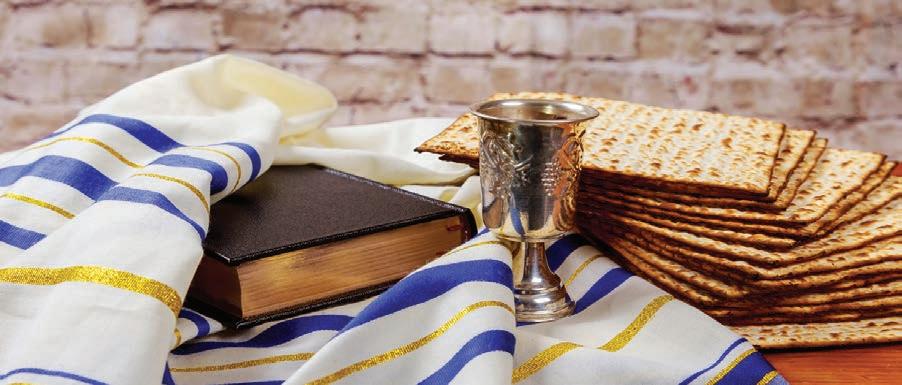
Growing up, my family’s standards were quite stringent. We did not eat any processed ingredients, and we only used produce that could be peeled. My mother prepared simple syrup in place of sugar, and we seasoned our dishes minimally with kosher salt, no spices allowed. Thankfully, I married into a family whose customs were slightly more lenient. My in-laws allow a variety of fruits and vegetables, including cabbage, as
well as some minimally processed foods, like tomato sauce.
When I spent Passover with my in-laws last year, I decided to pay homage to my roots by adapting my grandmother’s stuffed cabbage recipe for the holiday. While my grandmother would never have made this recipe for Passover, to me, it signifies the union of my husband’s familial customs with my Eastern European heritage. And that is precisely how we celebrate Passover.
Stuffed cabbage is popular in Ukraine and is known as holubtsi, which literally translates as “little pigeons”. Make some in solidarity with the Jews who were forced to flee their homes during this year’s Russia-Ukraine war.

For the cabbage rolls:
1 head of green cabbage
1 lb ground beef
1 heaping cup leftover mashed potatoes
1 small onion, grated
1 egg salt and pepper, to taste
For the sauce:
2 15 oz cans tomato sauce
1 Granny Smith apple, peeled and grated
1 arge tomato, finely chopped
1/3 cup sugar
Juice of 1 lemon salt and pepper, to taste
Place the cabbage in the freezer overnight (about 12 hours). Remove and place in a colander in the sink to defrost. This makes the cabbage pliable for rolling and stuffing.
Remove the outer leaves of the cabbage and discard. Peel the remaining large leaves, taking care not to tear the cabbage as you go. Set the whole leaves aside and chop up the remaining cabbage for later.
In a bowl, combine the ground beef, potatoes, onion, egg, salt and pepper. Set aside. Set up a stuffing station with your whole cabbage leaves and ground beef mixture. With a paring knife, trim the thick part of the stem off the base of the leaves, taking care not to cut through the rest of the leaf. Place the leaves upright so that they are curling upward like a bowl. Place a small handful of filling towards the base of each leaf and fold over the leaf from the left side. Roll the cabbage leaf up and using your finger, stuff the loose end of the leaf inward, pushing it into the center. Rolling the cabbage this way ensures that they hold together nicely during cooking.
Continue with remaining leaves. If you have any leftover filling, simply roll them into meatballs to place in the pot alongside the cabbage rolls.
Place the stuffed cabbage rolls in a large pot and cover with sauce ingredients. If you had any leftover cabbage or meatballs, add them to the pot as well.
Bring the sauce to a gentle boil over medium heat and reduce to a simmer. Cover the pot, leaving it slightly open so that the steam does not force the cabbage rolls to open. Cook for approximately 2-2 1/2 hours, until cabbage is tender and sauce has thickened.
VARIATION: For unstuffed cabbage soup, shred the cabbage and roll the meat into balls. Place everything into a pot and continue as above. JN
Wishing you joy and many blessings at Passover and throughout the coming year.© 2022 RBC Wealth Management, a division of RBC Capital Markets, LLC Member NYSE/FINRA/SIPC lader & Young Wealth Consulting Group
On Feb. 24, two shipping containers laden with 20,000 pounds of shmura matzah were slated to head out of port in Odessa, Ukraine, on their way to Orthodox Jews in the United States.
Two hours before they were to be loaded onto a ship, Russia invaded.
The shipment was the last of 200,000 pounds of unleavened bread that Ukrainian matzah bakeries shipped to the United States this year, in addition to what they ship to Europe and Israel.
Now, technically outside of Ukraine’s customs zone, it could neither be returned to the country nor travel on to the United States.
Rabbi Meyer Stambler, head of the Chabad-affiliated Federation of Jewish Communities of Ukraine, estimates that his factories in Ukraine account for about 15-20% of the U.S. market share for shmura matzah, the carefully “handmade” variety that many observant Jews prefer to use during the seder.
Shmura matzah is handmade in small batches with a higher level of supervision than most other types of matzah. That already makes it significantly more expensive than the factory stuff. A single pound box of shmura matzah could go from anywhere between $20 and $60, the Forward reported in 2018. In contrast, Instacart offers at least three different brands of regular matzah that come in under $10 for a 5-lb. box.
“I think the U.S. market will feel it,” Stambler told the Jewish Telegraphic Agency. “I think we are probably going to have a deficit of shmura matzah this year.”
The vast majority of shmura matzah produced abroad had already made it to the United States before the end of February, suggesting that the war in Ukraine is unlikely to be a major disruption. But an already overextended shipping industry after two years of pandemic, combined with rising gas and labor costs, have fueled rising prices for the matzah.
Barely over a month ago, Stambler would have said business was booming. “This year, we even opened a new matzah bakery, another branch, in Uman,” he said, referring to the Ukrainian city that is a pilgrimage site for Hasidic Jews.
Beginning baking around Hanukkah, the Ukrainian factories supply shmura matzah to Jewish communities in the entire former Soviet world in addition
to their customers in the United States, Israel and Western Europe. They are sold in America under the brand names Tiferes and Redemption, among others.
In Dnipro, the city where Stambler and his main matzah factory are based, periods of pogroms in the 19th century, which sent Eastern European Jews fleeing to the United States, are no longer top of mind for residents. The Holocaust and even Soviet repression also seem to be more distant memories.
Today, Dnipro — known until 2016 as Dnepropretrovsk — is the most Jewish city in Ukraine, boasting the massive Menorah Center, a sevenbranched building designed to look like the sacred candelabra and filled with kosher restaurants, wedding halls, ritual baths and other amenities for a Jewish community.
Though he has Israeli and American passports that would allow him to leave, Stambler has stayed behind to support the community, even after getting his family to safety.
“It’s very important to know that we’re staying here because we’re a part of the community, a part of the city.” Stambler said. “Just like President Zelensky said, each person has to fight on his own front. Our front is spreading Yiddishkeit.”
As Russian missiles struck the outskirts of Dnipro earlier this month, dozens still gathered for Shabbat, including many refugees who had come from harder-hit regions.
“We’re helping people from the whole Ukraine,” Stambler said. “From Kharkiv, from Zaporizhia, from Mariupol. We had 70 families who came out of Mariupol.”
Matzah production is still going on in town as well, though Stambler said about two thirds of the factory’s staff had fled. Those who remain are making matzah just for Ukraine.

“We’re going to make a very big campaign to bring the seder to every Jewish home,” Stambler said.
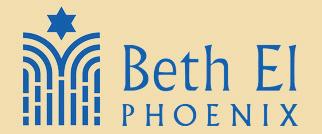
Stambler has plans for the 20,000 pounds in port as well.
“The only way I can bring it back to Ukraine is if it’s for the needs of the army,” he said.
Ukrainian men between 18 and 60 are forbidden from leaving the country in case they are needed for the war effort. Many Jews have already joined volunteer self defense units which are organizing across the country.

If the war stretches until Passover, something that appears increasingly likely as Russia continues to shell areas it had suggested it might Stambler said, there could be many Jewish soldiers looking for matzah in the Ukrainian Army.
Most of it will stay in Ukraine, he said, but a last truck is still scheduled to bring some of the surplus out to the United Kingdom. It will be the last international shipment of Ukrainian matzah this year. JN













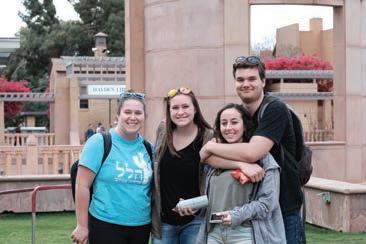



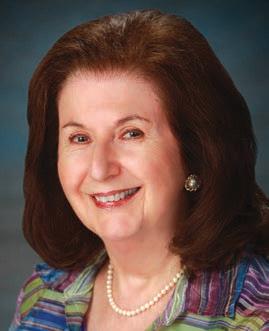











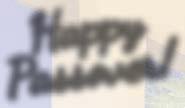
















 LINDA ZELL
LINDA ZELL

It is not too late to take Arizona tax credits for 2021, providing you have not filed your taxes yet. The deadline to take advantage of tax credits is April 18 or when you file your taxes, whichever comes first. The tax deadline falls during Passover; a time to reflect on what previous Jewish generations endured to be able to pass the faith on for generations to come. In that spirit, consider investing in the future of the Jewish community by taking advantage of Arizona’s various tax credit programs.
What are the tax credits and how do they work? The tax credit programs allow taxpayers to take a dollar-for-dollar credit against their state tax liability to support the state’s nonprofit organizations. There are several different tax credits including the Qualifying Charitable Organization (QCO), Private School Tuition Organization (STO), Qualifying Foster Care Charitable Organizations (QFCO), Arizona Military Family Relief Fund and public schools. There is also a corporate private school tuition program, but has its own requirements and deadlines. If interested in the corporate program, call a school tuition organization (STO) or visit the Arizona Department of Revenue website at azdor. gov for more information.
Each tax credit has a maximum amount that varies, although you can take advantage of each of the credits for a total of close to $6,000. Taxpayers can be divide their support within each category of tax credit, but cannot exceed the maximum amount for that category. For example, the 2021 maximum amount for the private school tuition tax credit is $1,219 for individual taxpayers and $2,435 for married couples. A taxpayer can give the maximum to one STO or they can divide their support among several STOs, as long as the total does not exceed the maximum amount allowed for the private school tuition tax credit. Taxpayers have the opportunity to support causes that are meaningful for them through the tax credits without an additional cost to the family budget.

The various qualified organizations and details for each type of credit can be found on the Arizona Department of Revenue’s website.












Funds raised through the Arizona tax credits support programs of each of the qualifying organizations. For example, the private school tuition program, through STOs, provides scholarships for children to go to private schools that are the right choice for their specific educational and family needs, the public school tax credit provides for field trips or afterschool activities and giving to qualifying charitable organization supports a range of programs depending on the organization such as assistance for food, rent/mortgage, healthcare and other basic needs.
The East Valley Jewish Community Center, Gesher Disability Resources, Jewish Free Loan, Kivel Campus of Care, Jewish Family & Children’s Service and Jewish Tuition Organization have a collaborative website at jewishtaxcredit. org that makes it easy for taxpayers to support these organizations. The Jewish Tuition Organization is a school tuition organization and the other five members of the collaborative group are qualifying charitable organizations. The group came together to make it easy for members of the community to be able to support organizations of choice at one time either through a brochure mailing that goes out at the end of the year or at jewishtaxcredit.org. The Qualifying Charitable Organization tax credit maximum amounts are $400 for individuals and $800 for married couples and as with the previous STO example, you can give the maximum to one organization or divide the amount among several.
When you support a Jewish tax credit organization you are making a difference in the lives of members of your own community now and ultimately the future, and you are choosing a cause that is close to your heart. Consider making a difference for a family or a person in need as you prepare your 2021 taxes and take the credit. JN
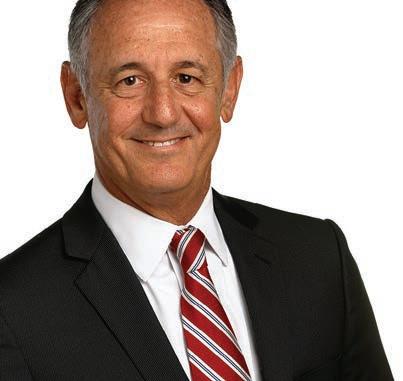
 HOLLY LEBOWITZ ROSSI | KVELLER VIA JTA
HOLLY LEBOWITZ ROSSI | KVELLER VIA JTA
When the coronavirus pandemic began in March 2020, many families pivoted from long-planned bar or bat mitzvah celebrations to virtual versions. In a matter of weeks, flexibility became the watchword as ceremonies and celebrations alike went online.
Even as the pandemic starts to recede across the U.S. and restrictions are lifted, virtual bar and bat mitzvahs — or a combination of in-person and virtual events, known as “hybrid”— continue. Fortunately, families now have the gift of time to plan and anticipate how to make the milestone special.
But how much time, exactly, is needed to set a plan in motion that minimizes stress and maximizes meaning?
Though everyone will have different levels of detail and planning needs for their virtual events, there is a general timeline and checklist that can help families feel prepared, excited, and ready to relax into the joy of the big day. Here’s what you need to know and do — and when to do it.
A virtual celebration may not require hotel reservations or airline tickets, but it does need to get on your loved ones’ calendars. Here’s how:
ASAP: Send save-the-date. Send either an electronic or simple paper save-the-date notice as soon as you’ve settled on your date. This will give your guests an early opportunity to anticipate the event as other calendar demands pop up.
4 weeks out: Send electronic invitations. Electronic invitations from websites like Green Envelope or Paperless Post should be sent a month before the bar or bat mitzvah.
8 weeks out: Send paper invitations: If you’re going the paper invitation route, plan to mail them six to eight weeks before the bar or bat mitzvah, leaning toward the longer end of that range to account for possible postal service delays. If possible, order your paper invitations a month before you plan to send them.
Multiple times: Send Zoom link. It’s best to provide guests with multiple opportunities to know how to access the celebration, via Zoom or another virtual meeting platform. You can share the link and password on your electronic or paper invitation — and plan to send it again as an electronic communication the day before the bar or bat mitzvah.

2-plus weeks out: Order favors. Many companies that make custom party favors (sometimes called “swag”) ask for a twoweek lead time for ordering. The same goes for lawn signs and other fun extras (bedazzled sneakers, anyone?). Be sure to account for shipping time (to your house and out to guests, if you are sending anything to others) when scheduling your order.
1 to 4 months out: Judaica. If you are ordering a designed or customized tallit (prayer shawl) or kippot (yarmulkes), many companies require a lead
If your plans have changed suddenly and you’re on a timetable, there are vendors that can turn around a custom order in weeks, or you can visit a local or online Judaica shop for quick turnaround.
1 to 2 weeks out: Mail favors. If you are sending party favors, or “mitzvah bags” containing wine or juice, a printed program for the bar or bat mitzvah, and other celebratory items by mail, try to
send them so they arrive a week ahead of time, just in case there are any postal delays. If you are dropping off these materials on local doorsteps, you can wait until the Thursday or Friday before the celebration — or delegate that task to a local friend.

Activities and extras
There are myriad options for virtual activities to do after the bar or bat mitzvah ceremony, and many can be put together in just a little time (or planned well in advance).



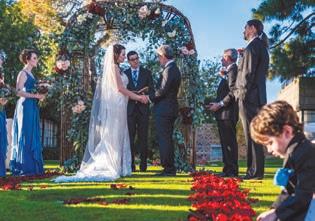
3-plus weeks out: Create virtual hora. Many families are creating “virtual horas” by asking loved ones to record short videos of themselves dancing to a pre-recorded “Hava Nagila” or other Jewish circle dance music. A fun touch is to order a “Face on a Stick” representing the bar or bat mitzvah child, so friends and family can dance “with” him or her. Allow two weeks to order and ship the faces, if using, and to give your loved ones additional time to finish their recordings before either editing them together yourself or outsourcing to a video production company.
1 to 4 weeks out: Create video montage. A video montage is a special way to showcase a family’s pride in their child’s growth and accomplishment. Set to music (both fun and meaningful) and rich with photos or video clips of the child from birth through the milestone day, this montage can be assembled by the parents, or outsourced to a video production company. Be sure to leave time to collect your photos — including consideration of whether you want to ask friends and relatives to send their own snaps to include.
2-plus weeks out: virtual entertainment — Magicians, musicians, artists, and game-night entertainment companies are terrific virtual bar and bat mitzvah options. Obviously, your choices will vary based on the entertainers’ availability, so the earlier the better for booking.


Professional support
ASAP: Book photographer. Event photographers’ schedules can be hard to crack, even for simple at-home photo shoots at virtual bar and bat mitzvahs. Prioritize your photographer search so you can explore options like on-the-day portraits and candids, and/or a family photo shoot before the mitzvah day itself. Photographers vary from weeks ahead of the event to over a year.
1 month out: Book Zoom manager. Your synagogue might be able to connect you with someone whose role will be to “host” the Zoom meeting, admitting guests, helping people mute and unmute when appropriate, and troubleshooting any technical challenges that might arise. This person can also help facilitate a virtual guest
book, should your family desire that.

Technology
Safety, function, and accessibility are crucial as you implement and test out your technology plan.
2 weeks out: By the two-week mark before the bar or bat mitzvah, you will want to feel confident in these technical aspects of the day:
Password protection / security
Connectivity and WiFi strength in the home Sound (microphones, ambient noise, earbuds, etc)
Lighting (ring lights, overhead lighting, natural light)

Music (playing music through different platforms)
Recording (you will want to be clear on whether and how to record the ceremony to share with those who could not attend.)

The Service
Your bar or bat mitzvah child will do a lot of learning and preparation for their milestone celebration. Your own preparations for the service could include:
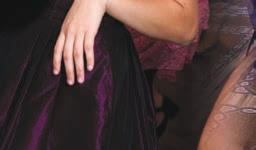
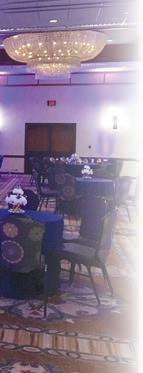
Creating a program or booklet (give yourself time to send it electronically or by mail)

Choosing readings for honored guests
Writing a speech to read to your child
Arranging to have plenty of tissues on hand for tears of joy and pride
Food and decor
1 month out: Order balloon arch. If you’re planning on incorporating this always-popular bit of decor, keep in mind that party stores and professional party companies need a few weeks’ notice to prepare balloon arches to set up indoors or on your driveway, so reach out early.
1 to 2 weeks out: Order the celebratory meal. Catering options abound and can be fastidiously planned several months in advance. But for a small, mostly-virtual bar or bat mitzvah, it can be as easy as reaching out to your favorite restaurant to have a well-loved meal served to your family.
1 to 4 weeks out: Order the cake. A cake represents such a sweet moment in the bar or bat mitzvah ceremony. Yours can be small, but it will certainly be special! A specially designed cake by a top bakery is a special treat. Local bakeries and grocery stores often have easily customizable cakes for last-minute ordering.
1 week out: Plan set-up. If you have to move furniture to accommodate your Zoom set-up, try to get it done a few days before the event so you have time to rehearse, test out the various technologies, and relax in the space that will become your home sanctuary. JN
 JENNIFER STARRETT
JENNIFER STARRETT
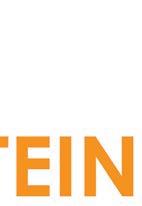

As an Arizona native, I spent many nights at Camp Charles Pearlstein, now Camp Daisy and Harry Stein. There is something magical I feel each time we reach the camp entrance that I have never been able to put my finger on. Whether it is the cool breeze and smell from being surrounded by beautiful trees or the familiarity of the cabins, buildings and pathways, I can’t help but smile as a feeling of comfort and happiness washes over me those first moments after arriving at camp. However, several weeks ago, that feeling was magnified beyond my imagination as I had the opportunity to spend time at Camp Stein with my family at PJ Library Family Camp. This was the fourth annual camp weekend for families (after an interruption for COVID) through PJ Library in Phoenix, and the programming was planned and run by both PJ Library director Marcy Lewis and volunteer coordinator Laura Drachler who initially spearheaded this weekend in April 2017 as a project of the Women’s Leadership Institute (WLI).
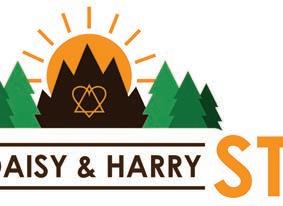
As a mentee of the WLI program, Laura’s goal was to bring a family camp to the PJ Library community. Laura has a deep connection to camp and understands the importance it has in creating a long-lasting connection to Jewish life. Each year, the weekend has been either 90% filled or full to capacity, and the magic created is indescribable.




We were able to experience a weekend packed full of amazing camp experiences together as a family and had the opportunity to connect and get to know other young families from our community in a unique and memorable way.

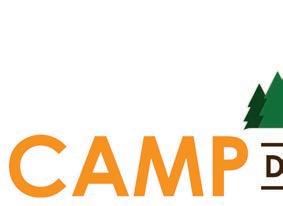
From the moment we arrived, we were swept up in the camp spirit as we dove right into Friday night Shabbat services, a delicious Shabbat dinner and a fun night of family and adult programming. Our kids loved staying up late with some of their friends and the most incredible counselors, while we had the opportunity to hang out with other parents and get to know each other better over drinks and snacks before
all heading to bed in our cabin. Saturday was spent enjoying services in the beautiful outdoors, hikes around camp, activity choices including ropes course, rock wall, art, music, cooking and more. With so many activities available, it was hard to choose the ones we wanted to do as a family, but we quickly found ourselves bouncing from one to the next. At night we enjoyed singing and s’mores by the campfire, a quintessential camp experience. The evening was full of laughter and fun as the adults competed in trivia and the kids spent time watching movies and having a dance party in another area of camp.
Typically our weekends are spent driving from place to place, so the fully packed weekend was something we were used to. Usually, those full weekends can be draining, but this weekend spent together at camp had the opposite effect. I found
myself exhausted but filled with blissfulness, even as I did load upon load of laundry after arriving home on Sunday afternoon. Weeks later, I fondly think of the memories we made together and remember the look of pride on our kids’ faces as they reached the top of the rock wall or end of the ropes course. They are still talking about the new friends they made and how excited they are to go back to camp for the summer. And I continue to beam with pride as I hear how connected they feel to the camp experience and Jewish life. PJ Library Family Camp was the perfect escape we didn’t know we needed, and I’m truly grateful for the opportunity to connect with my family in this special way. JN

best for your child, but you also need to be prepared to experience discomfort and ups and downs.
What camp should I send them to?
When I left for my first two-week stint at Jewish camp as a 9 year old, my mother was very worried. She was convinced I wasn’t ready, I would be homesick or maybe even worse: I would love it and never want to come home.
Ten years later, I will serve my second year on camp staff this summer and am eternally grateful for her eventual consent in sending me. However, I understand the concerns, especially for the first summer. Here are the answers to questions you’re sure to be asking.
How will I know when my child is ready for camp?
This is the big one and it really depends on the individual kid. Whenever your kid becomes interested in camp or you start thinking about sleepaway camp, it’s important to remember that nobody is prepared for everything that happens their first summer. Homesickness, to a certain extent, is expected and quite normal. Your kid will be doing lots of things for the first time and that’s OK! You should trust yourself to know what’s
There is an abundance of overnight camps out there and that may feel overwhelming. A good start is either working through camps you already know about from friends who send their children to camp, or starting by thinking through if they want a specialty camp (sports, music, arts, etc.) or a more general Jewish sleepaway camp and then prioritizing what you want the camp to offer and what your child is looking for.
Once you decide on a camp, it may be good to consider sending your child with at least one friend, especially for the first summer. Talking with members of the camp staff can also give insight and it may be beneficial to try and speak with a family who has been part of the camp to see if the camp would be a good fit.
What would be the benefit of sending my child to camp at this age? Would it be better to wait until my child is a little older and more mature?
Camp can have an incredible impact on children and can also play an important part of their development. Campers learn important life skills and the camp setting is great for kids yearning for more independence and for those that need encouragement to try new things and step out of their comfort zone. From the small things like learning how to make a bed and keeping track of belongings to larger ideals of learning how to build meaningful connections with peers and staff, camp can make kids more confident and increase emotional maturity.
That being said, while counselors and camp teams can help kids with transition and everybody starts at different places, it may be good to wait a summer if your child doesn’t do well with sleepovers and has never shown interest in going to camp, especially for younger campers aged 7-11. However, for older kids, even if they’ve never displayed interest in overnight camp, it may be beneficial for them to get out of the house and try something new.
Will my child be able to handle any normal homesickness?
Yes! Almost every kid that’s gone to camp has experienced some sort of homesickness. Whether it’s missing home-cooked food, a more comfortable bed or the presence of familiarity, homesickness is a normal part of camp,


especially the first summer or two. For most kids, homesickness is prevalent during the first couple of days and may peter out after that. Counselors are equipped to handle homesickness with a variety of strategies and the prospect of homesickness is no reason to not to send your child to camp.
At my camp, we actually rephrased the term and now call it a Mossy Moments (Moments of Sadness) when a camper is experiencing homesickness. The journey of seeing kids grow from crying on the first day because they miss their parents to crying on the last day because they don’t want to leave is the reason that many of us come back to camp year after year.
In very special cases where homesickness is really prevalent, there are camper care teams that can get in touch with parents to discuss next steps, but 99% of the time, getting through the initial discomfort and homesickness is a really important step for campers.
What can I do to support my camper?
Whether you’re more nervous about sending your kid to camp, or they’re nervous about going to camp, the best thing you can do is give them space. While it may seem intuitive to want to keep tabs on your kid and check in on them every day while they’re there, kids need space to get used to camp and come into themselves. The constant reminder of parents can increase homesickness or prevent campers from becoming comfortable.
One thing that I’ve found is that a parent’s nervousness will reflect on their kid. It’s important to stay calm and talk through concerns with a peer, rather than your child who may internalize the anxiety. If you’re more nervous than your kid, that’s another sign that they may be ready for camp!
Will the camp provide a nurturing and safe environment for my child?
This question is all about research. While your kid may be ready for camp, there are always certain camps that will be a better fit over others. It’s key to know what services camps offer and if you’re unsure, you should ask and be in communication with the camp. However, at some point, you should ask yourself if your concerns are really due to services (or lack thereof) at the camp or just general uneasiness about sending kids to camp. JN

7 p.m. Join Sharon Friendly, cantorial soloist emeritus at Desert Foothills Jewish Community Association, and Baruch Koritan, cantor at Beth Shalom in Sun City and other entertainers for a night of your musical favorites at the Valley of the Sun Jewish Community Center, 12701 N. Scottsdale Rd., Scottsdale. For tickets, visit vosjcc.org.

SUNDAY, APRIL 10
Make a Matzah: 3 p.m. Join PJ Library and the Bureau of Jewish Education of Greater Phoenix for an afternoon of matzah making, stories, songs and crafts at Valley of the Sun Jewish Community Center, 12701 N. Scottsdale Rd., Scottsdale. Free, registration required at jewishphoenix.regfox.com/make-a-matzah.
Gesher’s Community Model Seder - Online: 7 p.m. Join Gesher Disability Resources for a seder where participants can review the progression of the seder service and meal, but at their pace. The story of Passover is shared, but with a special haggadah prayer book produced by Gateways. For more information or to RSVP, contact info@gesherdr.org.
MONDAY, APRIL 11
J Movie Club: 7 p.m. Come to the Valley of the Sun Jewish Community Center, 12701 N. Scottsdale Rd., Scottsdale to watch gripping and powerful films all with a Jewish theme. This month’s film: `Portrait of Wally.’ Following each screening, stay for a discussion about the film. Snacks will be served. For more information, visit vosjcc.org.
THURSDAY, APRIL 14
”All Things Senior” Expo: 9 a.m.-1 p.m. Join Scottsdale Senior Services at the Scottsdale Stadium, 7408 E. Osborne Rd., Scottsdale for an event featuring a collection of exhibitors who provide products, resources and valuable services to the 50+ community. For more information, visit scottsdaleaz.gov/seniors/senior-expo.
FRIDAY, APRIL 15
Passover Under the Stars: 6:15 p.m. Join Chabad Jewish Center of Mesa for a first night of Passover seder. No one will be turned away due to lack of funds. For more information, visit chabadmesa.com/seder.
THURSDAY, APRIL 21
Jewish Baby University: 6:30-9 p.m. Join the Bureau of Jewish Education of Greater Phoenix for the spring series of this class for expectant parents held at the BJE Library, Ina Levine Jewish Community Campus, 12701 N. Scottsdale Rd., Scottsdale. For more information, contact 480-634-8050 or visit bjephoenix.org.
SUNDAY, APRIL 24
Mahjong Tournament: 9:30 a.m.-4 p.m. Join Temple Beth Shalom, 12202 N. 101st Ave., Sun City and Tikvah-WV Hadassah for a mahjong tournament and silent auction. Cost: $45 and includes continental breakfast and lunch. For more informaiton, visit events.hadassah.org/ mahjongg.
Demystifying Dementia Event: 1-4 p.m. Join Temple Chai, 4645 E. Marilyn Rd., Phoenix for an event featuring Dr. Eric Reiman, executive director at Banner Alzheimer’s Institute, sharing
information about what is new and emerging in the dementia landscape. Event includes community resourcs, legal information and a chance to share your story about how dementia has touched your life. The event is free; RSVP by April 17 at templechai.com/ demystifyingdementia.html.
WEDNESDAY, APRIL 27
Yom Hashoah commemoration: 6 p.m. Join the East Valley Jewish Community Center, 908 N. Alma School Rd., Chandler for a Yom Hashoah ceremony and “Branded Degenerate: Voices Silenced,” a lecture-recital featuring pianist Hannah Creviston, soprano Amanda DeMaris and saxophone player Christopher Creviston performing works of those killed in the Holocaust. Free. Registration required at evjcc.org/yomhashoah.
THURSDAY, APRIL 28
Pour Paint Class for Passover: 5:30-7:30 p.m. Join the Valley of the Sun Jewish Community Center, 12701 N. Scottsdale Rd., Scottsdale for this class with instructor Orit, who will teach about color combinations and the pouring technique to create a canvas tied to Passover. Cost: $45 for members; $55 for non-members. For more information, visit vosjcc.org.
SUNDAY, MAY 1
Yom HaShoah: Never Again, But How?: 11 a.m. Join the Phoenix Holocaust Association to honor the memory of those who perished during the Holocaust and recognize those who survived. The program features a round table discussion with high school students and Holocaust survivors, music and a candle-lighting ceremony. This will be a virtual presentation and is open to all. For more information, visit phxha.com/events/ yom-hashoah/.
From Samarkand to the Valley of the Sun: The History and Culture of the Bukharan Jews: 4-7 p.m. Join Beth El Congregation, 1118 W. Glendale Ave., Phoenix to learn more about the Bukharan Jewish community in Arizona. The event features lectures, reminiscences and a live musical performance by the Shashmaqam Ensemble of Queens, NY. Cost: Free (kosher Bukharan food available onsite for purchase). For more information and to register (recommended), visit jewishstudies.asu.edu/ bukharan.
THURSDAY, MAY 5
Scones for Mom – A Baking Class by The Cookie Bar Queen: 6-7:30 p.m. Join Valley of the Sun Jewish Community Center, 12701 N. Scottsdale Rd., Scottsdale to bake and decorate blueberry lemon drop scones to enjoy yourself or give as a gift to your favorite mom or mom-to-be!
Cost: $55 for members; $65 for non-members. For more information, visit vosjcc.org.
TUESDAY, APRIL 12
Tuesday at the J: 10-11 a.m., Join the East Valley Jewish Community Center for Tuesdays at the J free virtual presentation featuring “Seeing Arizona Through Art” presented by Phoenix Art Museum docent JoAnne Smith. For more informatinon, visit evjcc.org/tuesdays.
Shabbat FRIDAYS
In-person services: Congregation Beth Israel is holding services in the Goldsmith Sanctuary limited to 100 people, excluding clergy and staff. Members and guests must be fully vaccinated (two weeks since your last vaccination) and wear a mask. Children may attend and must be able to wear a mask for the duration of the service. Participants must pre-register by Thursday at 5 p.m. Priority will be given to members first and then guests. If there are more requests than available seats a lottery system will be used. To make your reservation, contact Gail Gilmartin at 480-951-0323 or at ggilmartin@cbiaz.org.
In-person services: Temple Chai is holding Friday evening (5:30 p.m. Nosh, 6:16 p.m. sevice) and Shabbat morning (varying dates and times). For more information, contact Sheana Abrams at 602-971-1234 or sabrams@templechai.com.
In-person services: Congregation Or Tzion is holding Friday evening (6:00 p.m) and Shabbat morning (9:30 a.m.) services indoors. Masks are required for everyone attending. Services are also live streamed at otaz.org/livestream. For more information about services, events, membership and our new COVID policy, please visit congregationortzion.org or call 480-342-8858.
Tot Shabbat in the Park: 9:30 a.m. Free totShabbat every Friday morning at Cactus Park. Shabbat music, toys and a meaningful preschool Shabbat experience. Is it your child’s birthday? Sponsor a Shabbat for $36.00. For more information and to register, visit playdatesbydesign.com/upcoming-classes.
Shabbat at Beth El: 11-11:45 a.m. Celebrate Shabbat with songs, blessings and inspirational teachings. Rabbi Stein Kokin from Beth El Congregation will lead us the first Friday of every month. Special guests will be welcoming Shabbat during the remainder of the month. For more information or to join, visit bethelphoenix.com.
Welcome Shabbat: 11-11:45 a.m. Join the JFCS Virtual Center for Senior Enrichment each Friday for a soothing and inspiring program to welcome Shabbat. Each week a different guest host will lead the program with song and celebration. Cost: Free. For more information, visit jfcsaz.org/cse.
Erev Shabbat Service: 5:30 p.m. Rabbi Alicia Magal will lead a service livestreamed for members of the Jewish Community of Sedona and the Verde Valley. Cost: Free. For more
information and to obtain the Zoom link, visit jcsvv.org/contact.
Kabbalat Shabbat: 5:30 p.m. Congregation Kehillah invites you to join services via Zoom, every other Friday, with Rabbi Bonnie Sharfman and cantorial soloists Scott Leader and Erica Erman. For the dates, visit congregationkehillah. org/events and to register and receive the link, please email info@congregationkehillah.org.
Pre-Shabbat Kiddush Club: 6 p.m. Say kiddush with Rabbi Mendy Levertov online. Cost: Free. Tune in here: ourjewishcenter.com/virtual. For more information, visit chabadaz.com.
In-person Third Friday Shabbat: 7-8 p.m. The Desert Foothills Jewish Community Association hosts a Shabbat service followed by a program. Contact Andrea at 480-664-8847 for more information.
MONDAYS
Tai Chi with Brian Stevens: 10-10:30 a.m. Tai Chi and Qigong are health practices that incorporate a form of ancient Korean healing martial arts known as DahnMuDo, which produces an overall limitless state of being, through focused movement and focused breathing. Experience a renewed sense of being, boost your immune system and enjoy doing so in this virtual class. For more information and to register, visit jfcsaz.org/events/.
Contact CSE Director Jennifer Brauner at seniorcenter@jfcsaz.org or 602-343-0192 with questions.
Featured Presentation: 12:30 p.m. Join Smile on Seniors Mondays and Wednesdays to learn from a variety of presenters about topical issues, like Q&As with medical professionals, entertainers and lectures. Cost: Free. For full details visit sosaz.org/virtual or email Rabbi Levi Levertov at levi@sosaz.org.
Brain Fitness: 1-2 p.m. Join Toby Lazarus in this virtual brain fitness class, which works to engage the brain in innovative ways in a variety of cognitive areas and can help increase mental acuity. Word play, puzzles, memory games and problem-solving activities are employed to enhance your brain power. Cost: Free. For more information and to register, visit jfcsaz.org/ events/. Contact CSE Director Jennifer Brauner at seniorcenter@jfcsaz.org or 602-343-0192 with questions.
Mindfulness-Based Stress Reduction: 1-2:30 p.m. In a seven week series that begins April 5, learn how to use mindfulness techniques to help relieve anxiety, depression and pain. Cost: Free. For more information and to register, contact seniorcenter@jfcsaz.org or call Jennifer Brauner at 602-343-0192.
Lily Berman of Peoria bought signed copies of both of Scottsdale author Linda Pressman’s books at the “Jewish Girls Gone Wild” book launch celebration at the Valley of the Sun Jewish Community Center on April 3.
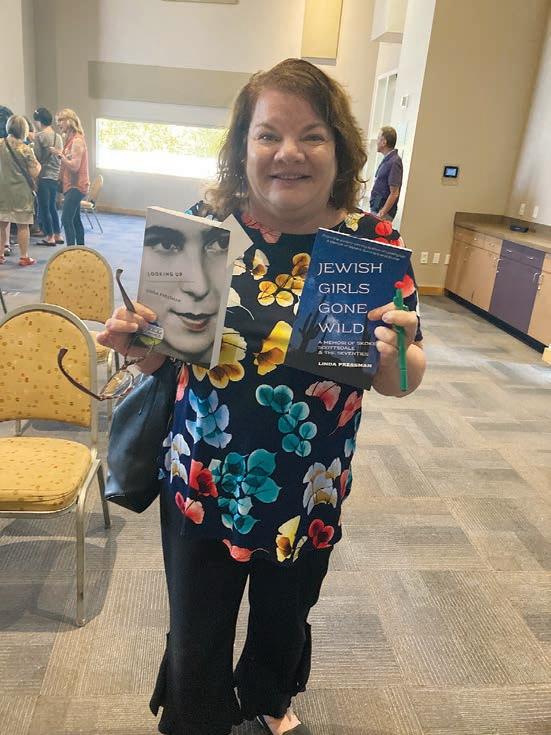


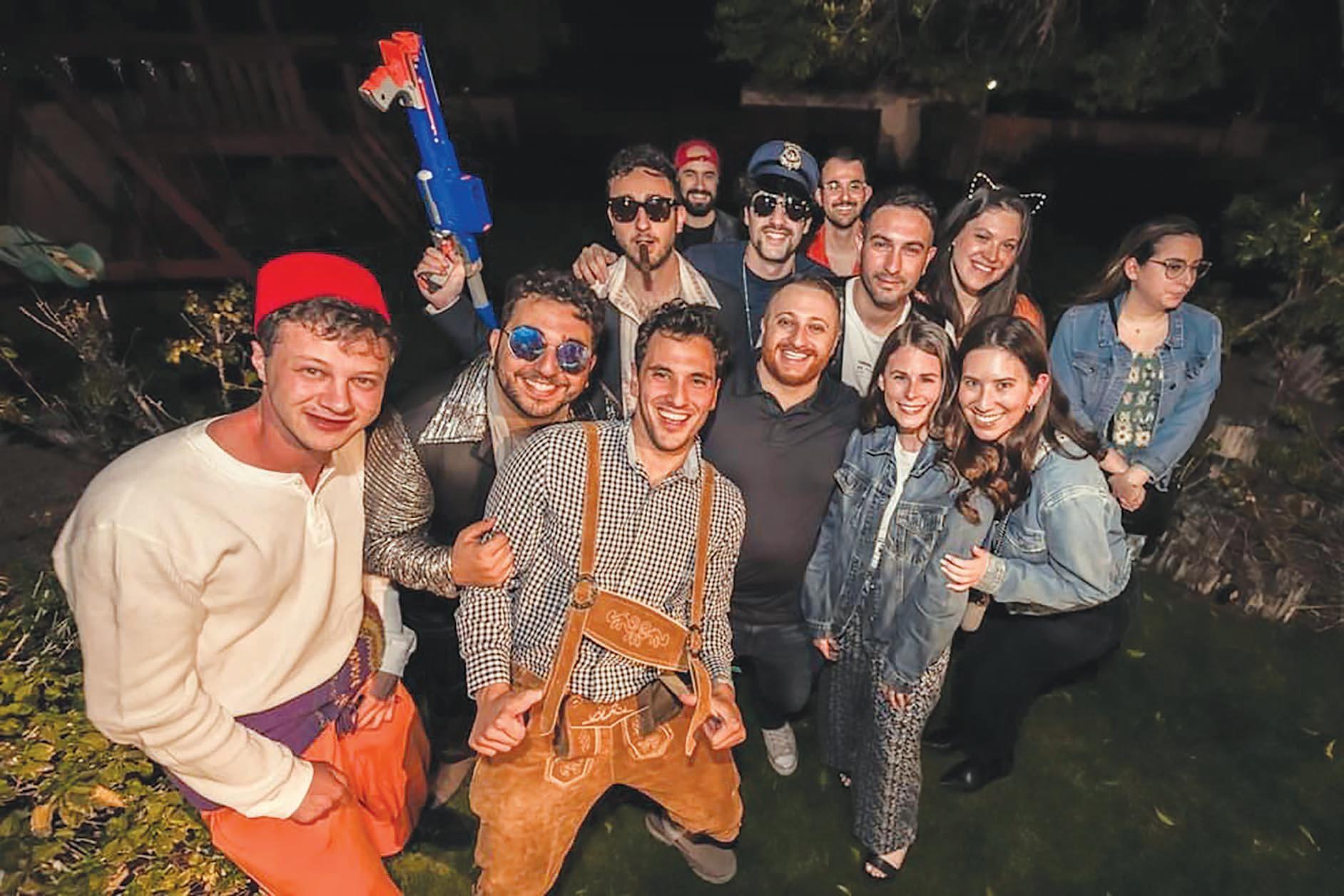


On Sunday, March 27, 200 people gathered at Congregation Beth Tefillah to hear from key staff members of StandWithUs, an international and non-partisan Israel education organization that fights antisemitism. Pictured, from left to right, Mindy Franklin, co-chair; Carly Gammill, founding director of the StandWithUs Center for Combating Antisemitism; Elena Schroeder, volunteer; Roz Rothstein, CEO of StandWithUs; Sue Lawler, volunteer; and Lynn Kahn, co-chair.
TUESDAYS
Zumba Gold with Adriana Padilla: 9:30-10:15 a.m. This virtual class is perfect for active older adults who want a modified Zumba class with lower-intensity. Class focuses on all elements of fitness: cardiovascular, muscular conditioning, flexibility and balance. Come to this virtual class ready to sweat, and prepare to leave empowered and feeling strong. For more information and to register, visit jfcsaz.org/events/. Contact CSE Director Jennifer Brauner at seniorcenter@jfcsaz. org or 602-343-0192 with questions.
Movie Discussion Group: 11 a.m. Join Smile on Seniors on the third Tuesday of every month hosted by Issy Lifshitz. Cost: Free. For full details and the movie of the month visit sosaz.org/virtual or email Rabbi Levi Levertov at levi@sosaz.org.
Brain Games with Friends: 2-3 p.m. Challenge your brains while having fun. Experts believe that active learning helps maintain brain health by preventing loss of cognitive skills such as memory, reasoning and judgment. For more information or to register, visit vosjcc.org/j-at-home-adults.
WEDNESDAYS
Fitness Fun with Zoe: 10-10:45 a.m. In this virtual class, do some light chair exercise with optional weights. Class follows a format of a warmup weight free movement, optional weights, then a cool down. Some standing options, however all moves can be done sitting. Presented by JFCS Center for Senior Enrichment. Cost: Free. For more information, visit jfcsaz.org/cse. Contact CSE Director Jennifer Brauner at seniorcenter@jfcsaz.org or 602-343-0192 with questions.


Chair Yoga with Zoe: 11-11:45 a.m. Grab a chair and sit down for a 45-minute chair yoga class with Zoe! Yoga is beneficial to mind, body and spirit. Prior to class, please let Zoe know if you have any limitations in order for exercises to be modified. No prior yoga experience required. Presented by JFCS Center for Senior Enrichment. Cost: Free. For more information, visit jfcsaz.org/cse.
THURSDAYS
In the Kitchen with Benita: 12:30 p.m. Join Smile on Seniors on the fourth Thursday of every month for some delicious cooking or baking fun! Cost: Free. For full details visit sosaz.org/virtual or email Rabbi Levi Levertov at levi@sosaz.org.
FRIDAYS
Welcome Shabbat: 11-11:45 a.m. Celebrate Shabbat virtually with songs, blessings and inspirational teachings. For more information and to register, visit jfcsaz.org/events/.







Contact CSE Director Jennifer Brauner at seniorcenter@jfcsaz.org or 602-343-0192 with questions.
Adult Chair Ballet Class: Noon-12:45 p.m. Join Jennifer Cafarella and Elaine Seretis from Ballet Theatre of Phoenix as they teach a ballet class that will help improve strength, flexibility, movement and balance. No prior dance experience required. Presented by the JFCS Virtual Center for Senior Enrichment. For more information, visit jfcsaz.org/cse.

Musical Friday: 12:30 p.m. Join Smile on Seniors on the first Friday of every month for a musical presentation. Cost: Free. For full details visit sosaz.org/virtual or email Rabbi Levi Levertov at levi@sosaz.org. JN
Shirley Ann (Myers) Oberfield, born in New Castle, PA on June 5, 1938 to William and Bella Myers, passed away peacefully on the morning of March 26, 2022 in Scottsdale, AZ. Shirley was 83 years of age.


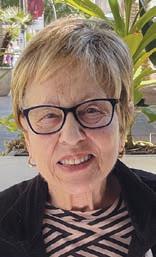
Shirley graduated from New Castle High School in 1956. While there, she excelled in classroom studies and enjoyed participating in theater productions. After high school she attended Penn State University, majoring in Education, and earned her degree at Youngstown State University.
In 1961, Shirley married the late Robert Oberfield (d. 2018), with whom she spent 57 loving years. They lived in Pittsburgh, PA for thirty years where they raised their sons, Wayne and Eric. In 1990, Shirley and Robert moved to Scottsdale, AZ where they happily built many lifelong friendships. Outside of her family life, Shirley was employed as an office coordinator for a physical rehabilitation center in Scottsdale and spent many years volunteering for the Mended Hearts organization and the Honor Health Hospital System. She was also active in a knitting club to create clothing items for children in need. She enjoyed cooking for her family and experimenting with new recipes. Shirley visited various cities around the world and found joy in traveling with her husband and sons. She cherished the time spent with her family, including her two sisters with whom she had close and meaningful relationships.
Shirley will be remembered and forever missed. She is survived by her sons Wayne and Eric (Jenn Reno), granddaughter Harper, sisters Marcia Myers and Marlene Myers, nieces Emily Barnes (Michael Opest) and Blaire Patrick, and grand-niece Prudence and grand-nephew Rhys.
The funeral was held on March 29, 2022 at Mt. Sinai Cemetery and was conducted by Rabbi Sara Mason-Barkin of Temple Beth Israel, where Shirley was a member. The family would like to extend a special thank you to all her caregivers at Honor Health Hospital.
Those wishing to do so may make memorial donations in Shirley’s memory to the American Cancer Society (www.cancer.org).


REACH HIGHLY EDUCATED, AFFLUENT READERS



May 6

From home health aides to financial planners, independent living facilities to nursing homes, this is the perfect venue to showcase how your business can help older Jewish residents navigate retirement.
May 20


A look at ways for families to stay cool this summer from staycations and getaways to safe indoor activities.



JEWISHAZ.COM

Jewish News is accepting recommendations from our readers for our annual Best of Jewish Phoenix magazine.
This year, we’ll focus on the best of senior health and wellness – not just physical but financial fitness as well.


We welcome your recommendations to the following questions: What do you do to stay healthy?




Is there a class or program that you participate in for your mental, physical or social health?
Have you planned for your senior future?
Have you used a service that has assisted you with modifying your home for safety, creating financial security in retirement, estate planning, or establishing a plan to age in place, downsize or move to a senior community?


To submit a recommendation, please send an email to editor@jewishaz.com, including the name of the business/program you are recommending and no more than 300 words explaining why this entity should be considered for “best of” inclusion. Recommendations will be anonymous and confidential, but we may use the description you send us in the magazine.
40-CLASS SERIES: Pearls of Jewish Wisdom on Living with Kindness
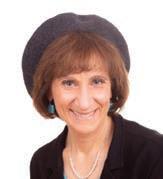
Rabbi Dr. Shmuly Yanklowitz
May 2022 - Feb 2023 @ 10:00 am PT
From Avoiding to Embracing: Rav Kook and the future of Shmita
Rabbi Yedidya Sinclair
Monday, May 2 @11:00 am PT
Shmitta: From Biblical Narratives to Contemporary Perspectives
Rabbi Dr. Avital Hochstein
Wednesday, May 11 @ 10:00 am PT
King David: Man of War and Politics, Man of God, Man of Contradictions.
Based on a close reading of the Books of Samuel
Rabbi Dr. Jeremy Rosen
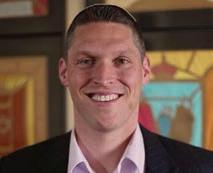

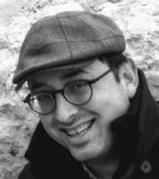
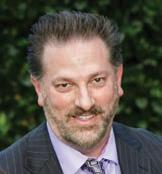







Thursday, May 26 @ 1:00 pm PT
Cain and Abel’s Day In Court: What The World’s First Murder Can Teach Us About Dispensing Justice And Injustice
Rabbi Dan Ornstein
Thursday, June 16 @ 1:00 pm PT
Shtisel’s Shas: A Talmudic Look at the Hit Israel T.V. Show
Professor Shai Secunda
Thursday, July 28 @ 1:00 pm PT
White Supremacy and Antisemitism: Lessons from the Capital Attack
Professor Jonathan D. Sarna


Monday, Apr 11 @ 1:00 pm PT
Finding God in Pain
Rabbi Morris Panitz
Wednesday, May 4 @ 1:00 pm PT
Messianism, Zionism, and Religious Radicalism: Four Spiritualties in Israel
Rabbi Menachem Creditor
Thursday, May 12 @ 1:00 pm PT
Third-Party Peacemakers in Judaism: Text, Theory, and Practice – Book Talk with Rabbi Dr. Daniel Roth


Rabbi Dr. Daniel Roth
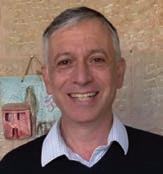

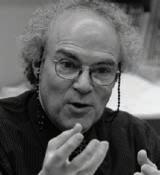
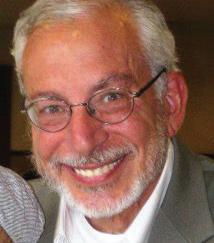
Thursday, June 2 @ 10:00 am PT
The Battle of De nitions: What is Antisemitism and why does its de nition matter?
Professor Joshua Shanes
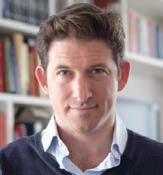
Thursday, July 7 @ 1:00 pm PT
A memoir that explores the stories of survival, tragedy and hope
Joel Poremba
Thursday, Aug 4 @ 1:00 pm PT
Women’s Resilience and Survival in the Holocaust
Professor Bjorn Krondorfer
Wednesday, Aug 24 @ 1:00 pm PT
Finding Spirituality in the Laws and Customs of the High Holidays
Rabbanit Sharona Halickman
Thursday, Sept 1 @ 9:00 am PT
The Biblical Plagues and OUR Plague: An Anthropocentric “Theology” and a Lesson for Our Times
Rabbi Chaim Seidler Feller
Tuesday, Apr 12 @ 1:00 pm PT
Devorah the Prophet: A Model of Leadership Irrespective of Gender
Rabbi Dina Najman
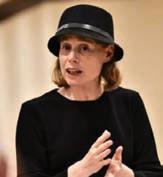

Thursday, May 5 @ 1:00 pm PT
Power of the Image: Photographic Thoughts on Torah Values
Shira Hecht-Koller
Wednesday, May 18 @ 1:00 pm PT
Prozbul: Innovative Halachic Change or Gaming the System?
Rabbi Zvi Hirsch eld
Wednesday, June 8 @ 10:00 am PT
Corona Exegesis: Political Cartoons, Jewish Holidays, and Israeli Society
Dr. Matt Reingold

Wednesday, July 13 @ 1:00 pm PT
Prophecy: What Does it Mean Anyway?
Jonnie Schnytzer
Thursday, Aug 11 @ 10:00 am PT
To Be a Holy People, Jewish Tradition and Ethical Values
Rabbi Dr. Eugene Korn
Thursday, Apr 28 @ 10:00 am PT
My journey in science and engineering as a Torah observant Jewish woman
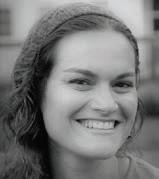
Dr. Rosa Krajmalnik-Brown



Monday, May 9 @ 1:00 pm PT
The Tragedy of Heruta: The Madonna who Became a Whore
Gila Fine
Wednesday, May 25 @ 10:00 am PT
Brothers Crying Out from the Ground:The Biblical Origins of Our Divided Society
Dr. Judy Klitsner
Thursday, June 9 @ 10:00 am PT
All Hands on Deck: The Gifts That Introverts and Extroverts Bring to Jewish Leadership and Why It Matters
Rabbi Edward Bernstein
Wednesday, July 20 @ 1:00 pm PT
The Jews of China: Enduring Survival in the Middle Kingdom
Dr. James Baskind
Thursday, Aug 18 @ 1:00 pm PT
Nature and Revelation: what the Jewish calendar teaches us about their relationship
Dr. Elana Stein-Hain
Thursday, Sept 8 @ 1:00 pm PT
